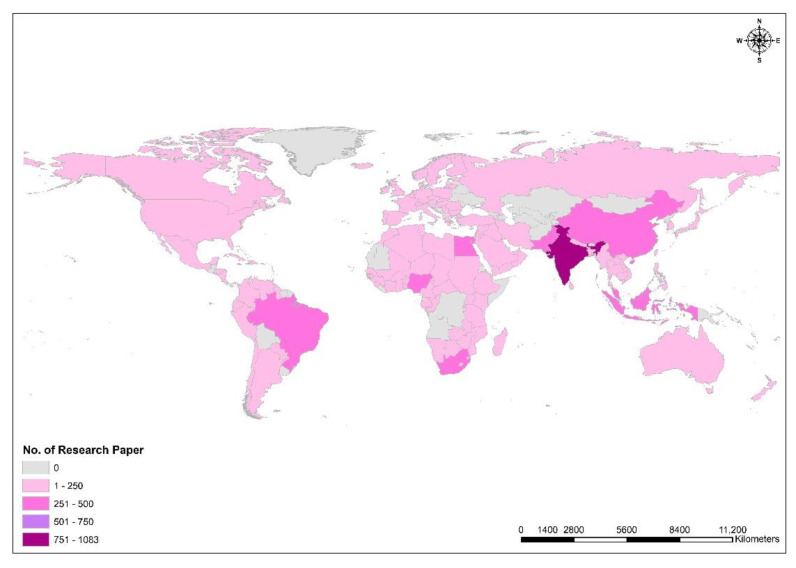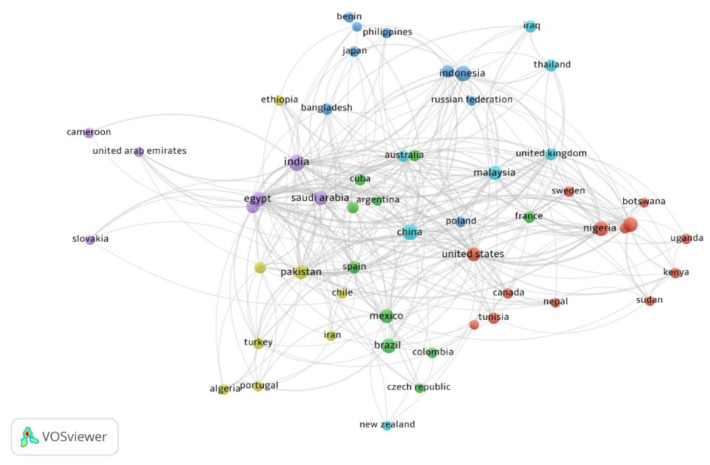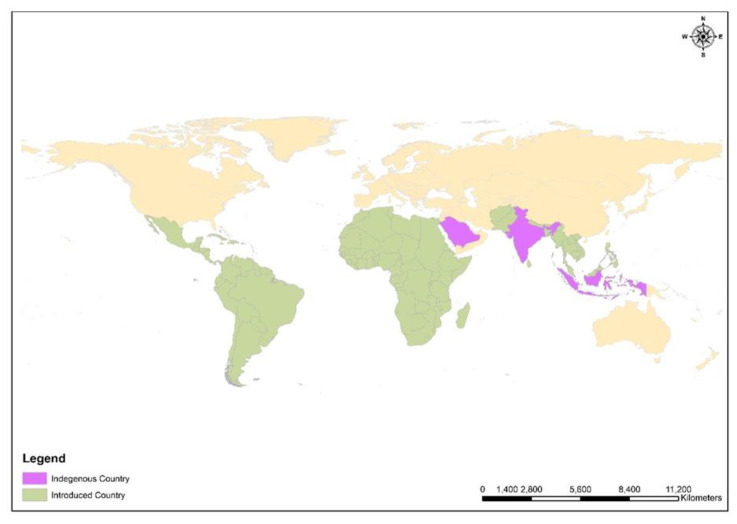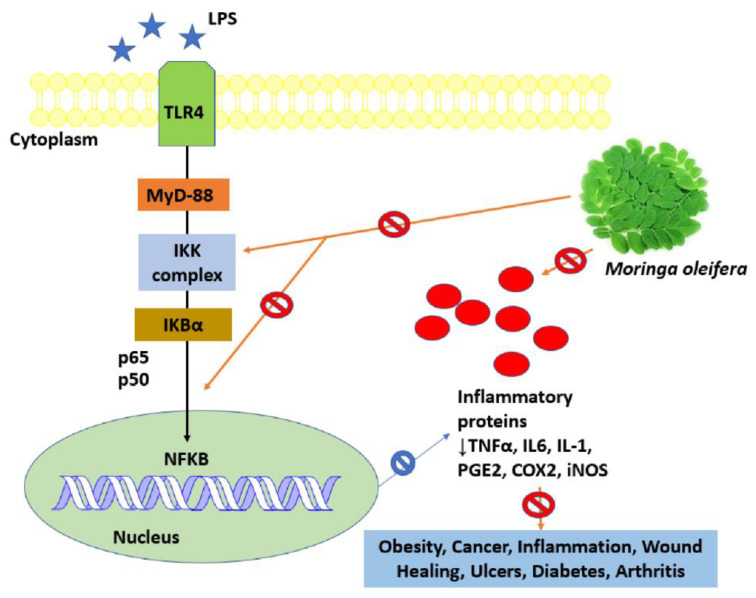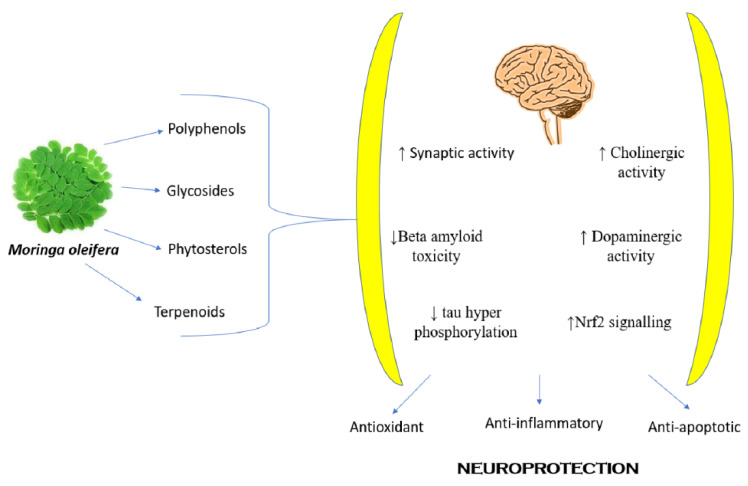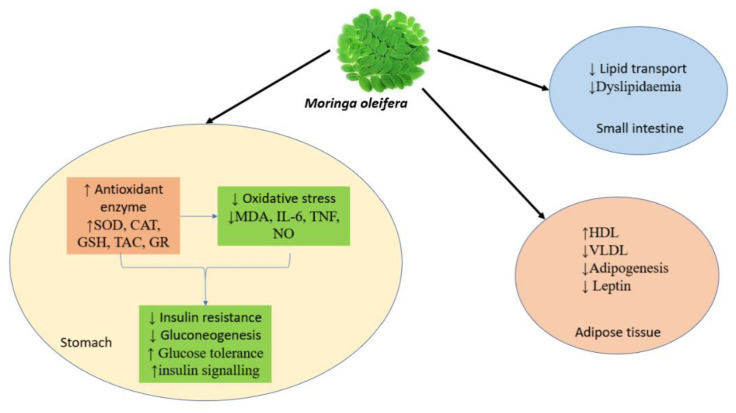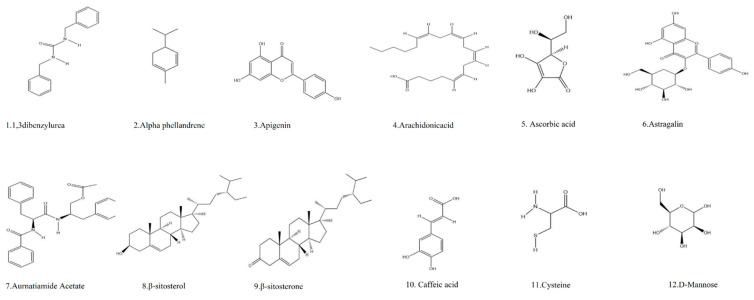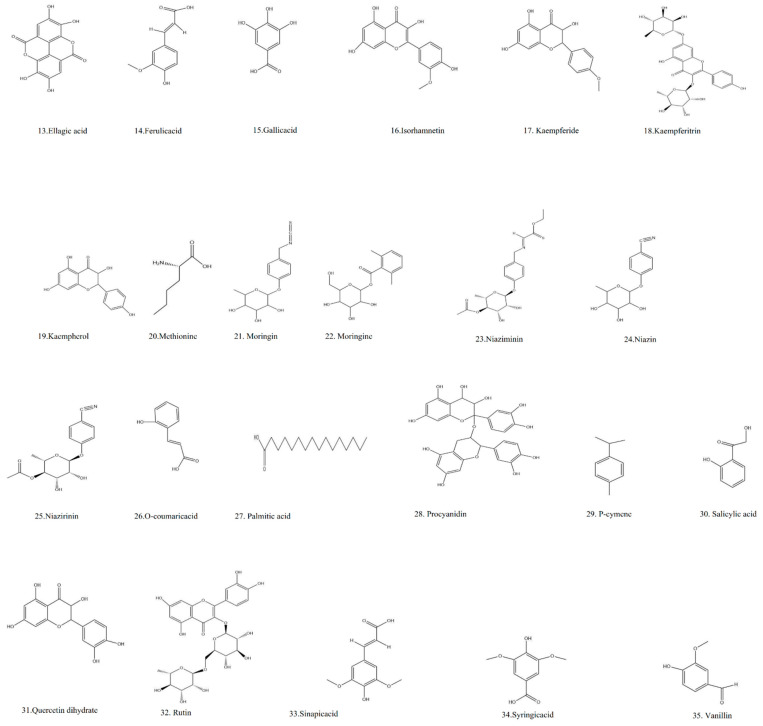Abstract
Moringa oleifera, also known as the “tree of life” or “miracle tree,” is classified as an important herbal plant due to its immense medicinal and non-medicinal benefits. Traditionally, the plant is used to cure wounds, pain, ulcers, liver disease, heart disease, cancer, and inflammation. This review aims to compile an analysis of worldwide research, pharmacological activities, phytochemical, toxicological, and ethnomedicinal updates of Moringa oleifera and also provide insight into its commercial and phytopharmaceutical applications with a motive to help further research. The scientific information on this plant was obtained from various sites and search engines such as Scopus, Pub Med, Science Direct, BMC, Google Scholar, and other scientific databases. Articles available in the English language have only been referred for review. The pharmacological studies confirm the hepatoprotective, cardioprotective, and anti-inflammatory potential of the extracts from the various plant parts. It was found that bioactive constituents are present in every part of the plant. So far, more than one hundred compounds from different parts of Moringa oleifera have been characterized, including alkaloids, flavonoids, anthraquinones, vitamins, glycosides, and terpenes. In addition, novel isolates such as muramoside A&B and niazimin A&B have been identified in the plant and have potent antioxidant, anticancer, antihypertensive, hepatoprotective, and nutritional effects. The traditional and nontraditional use of Moringa, its pharmacological effects and their phytopharmaceutical formulations, clinical studies, toxicity profile, and various other uses are recognized in the present review. However, several traditional uses have yet to be scientifically explored. Therefore, further studies are proposed to explore the mechanistic approach of the plant to identify and isolate active or synergistic compounds behind its therapeutic potential.
Keywords: Moringa oleifera, traditional medicinal uses, pharmacological activity, phytochemistry, phytopharmaceutical formulation, toxicity
1. Introduction
Moringa oleifera (M. oleifera), the “miracle tree”, thrives globally in almost all tropical and subtropical regions, but it is believed to be native to Afghanistan, Bangladesh, India, and Pakistan [1]. The Moringa family comprises 13 species (M. oleifera, M. arborea, M. rivae, M. ruspoliana, M. drouhardii, M. hildebrandtii, M. concanensis, M. borziana, M. longituba, M. pygmaea, M. ovalifolia, M. peregrina, M. stenopetala), of which M. oleifera has become well known for its use in nutrition, biogas production, fertilizer, etc., [2,3]. Moringa has the unique property of tolerating drought [3]. Studies have shown that M. oleifera is among the cheapest and most reliable alternatives for good nutrition [4]. Nearly all parts of the tree are used for their essential nutrients. M. oleifera leaves have a high content of beta-carotene, minerals, calcium, and potassium [5]. Dried leaves have an oleic acid content of about 70%, which makes them suitable for making moisturizers [6]. The powdered leaves are used to make many beverages, of which “Zija” is the most popular in India [7]. The bark of the tree is considered very useful in the treatment of different disorders such as ulcers [8], toothache [9], and hypertension [10]. Roots, however, are found to have a role in the treatment of toothache [9], helminthiasis [11], and paralysis [12]. The flowers are used to treat ulcers, enlarged spleen, and to produce aphrodisiac substances [2]. The tree is believed to have incredible properties in treating malnutrition in infants and lactating mothers [3]. The present review aims to sum up the updated insight regarding the pharmacological activities, worldwide research analysis, toxicological, phytochemical, and ethnomedicinal properties of M. oleifera.
2. Material Method
2.1. Article Eligibility Criteria
In the framework of searching for study material, the following keywords were used: “Moringa oleifera”, “pharmacology M. oleifera”, “phytochemistry M. oleifera”, “ethnobotanical applications M. oleifera”, “toxicology M. oleifera”, and other combinations of terms such as biochemical constituents, taxonomic classification, geographical distribution, and plant formulation to search relevant peer-reviewed journals in various scientific databases such as Scopus, PubMed, Springer, Google scholar, and Wiley. Articles available in the English language have only been referred for review. Articles were analyzed by reading the title and abstracts of the articles found, which clearly indicated that they were all relevant.
2.2. Software and Techniques Used
Chemical structures identified in the plants were searched in the Webbook, Chemspider, and PubMed databases, and at the same time, the identified structures were drawn using Chem Draw (version 12.0.2). VOS Viewer software (1.6.18) was used to generate the map of global collaboration between countries. Global country boundaries (GIS layers) were obtained from an open-source web platform (DIVA-GIS) for geographic mapping. Spatial techniques were used with ArcGIS 10.1 to map M. oleifera indigenous and introduced countries and research activities in each country.
3. Worldwide Research and Collaboration
A country-specific research database on M. oleifera was extracted from Scopus, and the data were linked directly to the country shapefile using the “connect field” function in the GIS environment for geospatial mapping. The analyses revealed that scientists from about 15 countries had published more than 100 research papers during the period 2000–2022. Among which India was the most prolific country (n = 1083), followed by Nigeria (n = 441), Brazil (n = 383), Egypt (n = 361), China (n = 331), Indonesia (n = 327), Pakistan (n = 281), South Africa (n = 272), Malaysia (n = 260), the United States (n = 214), Saudi Arabia (n = 205), Mexico (n = 163), Thailand (n = 127), and Italy (n = 105), (Figure 1).
Figure 1.
ArcGIS 10.1-based spatial distribution map highlights research papers published on M. oleifera worldwide. A spatial technique was used to generate a map, and GIS layers were obtained from DIVA-GIS, an open-source web platform.
International studies on M. oleifera involve the collaboration of scientists from countries such as India, China, Egypt, Saudi Arabia, Cuba, Australia, the United States, Nigeria, and Portugal, which is indicated by circles in the map (Figure 2). The analysis shows that many articles were published in the past decade, indicating the growing interest of researchers in this plant worldwide.
Figure 2.
Network visualization of international collaborative research conducted for M. oleifera using VOS viewer (1.6.18).
4. Taxonomical Classification
The plant M. oleifera belongs to the Kingdom: Plantae; Sub kingdom: Tracheobionta; Super division: Spermatophyta; Division: Magnoliophyta; Class: Magnoliopsida; Sub class: Dilleniidae; Order: Capparales; Family: Moringaceae; Genus: Moringa; Species: oleifera [3,13,14].
5. Morphology
The tree grows rapidly in loamy and well-drained sandy soils, preferring a height of 500 m above sea level [1]. Normally, the tree is small to medium in size, the leaves are naturally trifoliate, the flowers are born on an inflorescence 10–25 cm long [14], and the fruits are usually trifoliate and commonly referred to as “pods” [3]. The trunk usually grows straight but is occasionally poorly formed, the branches are usually disorganized, the canopy is umbrella-shaped; the brown seeds have a semi-permeable hull, and each tree has a capacity of about 15,000–25,000 seeds per year [10].
6. Botanical and Geographical Distribution
M. oleifera is widely distributed worldwide, but its indigenous origin is in India, Arabia and the East Indies. It is common in Asia, Africa, the Caribbean, Latin America, the Pacific Islands, Florida, Madagascar, Central America, Cuba, the Philippines, Ethiopia, and Nigeria [2,15]. The history of the plant explains that M. oleifera was introduced from India to Africa, Southeast Africa, and the Philippines in ancient times [16,17] (Figure 3). It requires tropical and subtropical regions and grows at a temperature of about 25–35 °C [1]. M. oleifera is a deciduous type of tree typically grown in tropical and subtropical regions across the globe [18,19]. It grows best in indirect sunlight and without waterlogging, and the soil should be slightly acidic to alkaline. The tree begins to bear fruit at 6 to 8 months of age [18]. Commercially, it is grown in different countries such as Africa, Mexico, Hawaii, and South America, but due to different soil conditions, the nutrient content varies from country to country [3].
Figure 3.
ArcGIS 10.1-based spatial distribution map of Moringa oleifera, the purple color shows the indigenous countries like India, Saudi Arabia, and East indies, whereas the green color shows the introduced countries and regions such as Tropical Asia, Latin America, Africa, Pacific Island, Caribbean Florida, Madagascar, Central America, Cuba, Philippines, Ethiopia, and Nigeria. GIS layers were obtained from DIVA-GIS, an open-source web platform.
7. Ethnomedicinal/Traditional Properties
People worldwide have included M. oleifera in their diet since ancient times because of its vital therapeutic values (Table 1). Various medicines made from the plant are said to have ethnomedicinal properties for curing diseases and have been used for centuries. Approximately every part (leaf, pod, bark, gum, flower, seed, seed oil, and root) of this plant has been used to treat one disease or another [20]. Uses of M. oleifera are observed in pathological alterations such as antihypertensive [10], anti-anxiety [21], anti-diarrheal [22], and as a diuretic [23]. Moringa is also used to treat dysentery [24] and colitis [25]. A poultice made from Moringa leaves is a quick remedy for inflammatory conditions such as glandular inflammation, headache, and bronchitis [9]. The pods treat hepatitis and relieve joint pain [19]. The roots are conventionally used to treat kidney stones [26], liver diseases [27], inflammation [28], ulcers [29], and pain associated with the ear and tooth [30]. The bark of the stem is used to treat wounds and skin infections [31]. Indians use the gum extracted from this plant to treat fever, and it is also used to induce abortions [32]. The seeds of the plant act as a laxative and are used in the treatment of tumors, prostate, and bladder problems [33]. The seeds show promise for the treatment of arthritis by altering oxidative stress and reducing inflammation [34]. Preparations from the plant leaves benefit nursing mothers and malnourished infants and improve the general health of the population. The leaves have been useful for patients suffering from insomnia [35] and treating wounds [36]. Moringa is used incredibly extensively in the cosmetic industry nowadays, and in ancient Egyptian history, it was similarly used for preparing dermal ointments [37].
Table 1.
Uses of Moringa oleifera listed in Ayurvedic medicinal textbook.
| Name of Ayurvedic Text | Form of Plant Used | Treatment | References |
|---|---|---|---|
| Charaka Samhita (1000 BC- 4th Cent. AD) |
Powder Decoction |
Used for treatment of worms and headache, Ascites, edema Hiccough and asthma, deafness, tinnitus in the ear, worm’s manifestation. |
[38] |
| Ashtanga Hridaya (7th Cent. AD) |
Oil | Ear ache, deafness, and tinnitus in the ear | [39] |
| Kashyapa Samhita (6–7th Cent AD) |
Decoction Oil |
Puerperal disorder, sleeplessness Edema |
[40] |
| Sharangadhara Samhita (13 Cent. AD) |
Decoction | Conjunctivitis | [41] |
| Yogaratnakara (17th Cent. A.D.) |
Decoction | Enlargement of spleen, worm edema, Ascites, fever, abscess. |
[42] |
8. Pharmacological Uses
Recent pharmacological studies have revealed that different extracts of M. oleifera exhibit different pharmacological activities, such as antimicrobial [43], antifungal [44], anti-inflammatory [45], antioxidant [46], anticancer [47], fertility [48], wound healing [43], and other pharmacological activities mentioned below (Table 2).
Table 2.
Phytoconstituents of Moringa and their relevant therapeutic effects.
| Plant Part | Compound | Class | Structure | Therapeutic Activity | References |
| Leaves | Rutin (555.6 µg/g) |
Flavonoid |
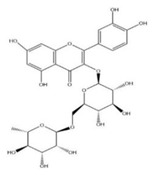
|
Found to have maximum affinity and interaction towards BRAC-1 gene. |
[49,50] |
| Leaves | Kaempferol (197.6 µg/g) |
Flavonoid |
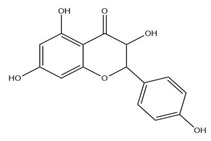
|
Oxidative damage protective activity. | [51] |
| Leaves | Quercetin (2030.9 µmol/100 g) |
Flavonoid |
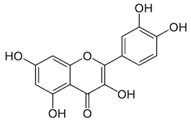
|
Exerts an excellent effect as anti-diabetic agent. | [52] |
| Leaves | O coumaric acid (0.536 mg/g) |
Phenolic acid |
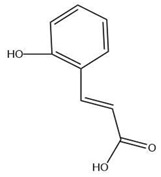
|
Antioxidant and anti-microbial | [53,54] |
| Leaves | Myricetin (5.804 mg/g) |
Flavonoid |
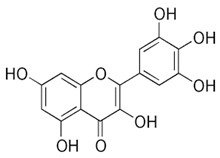
|
Potential prevention of diabetes mellitus and other diabetic complications | [54] |
| Leaves | Ellagic acid (0.078 to 0.128 mg/g) |
Polyphenol |
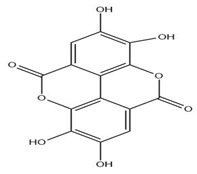
|
Prevents viral and bacterial infections, potential antioxidant |
[54,55] |
| Leaves | Ferulic acid (0.078 to 0.128 mg/g) |
Phenol |
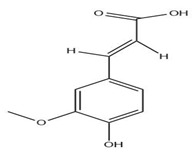
|
Promising results as anti- cancer, antioxidant, antithrombotic, anti-arrhythmic, and anti-inflammatory. |
[54,56] |
| Leaves | Caffeic acid (0.409 mg/g) |
Phenol |
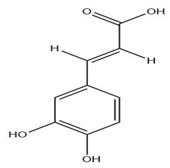
|
Boosts athletic performance, reduces fatigue, helps weight loss, protects against herpes, HIV, cancer. | [54,57] |
| Leaves | Sinapic acid (trace amount) |
Phenol |
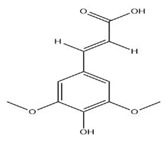
|
Cardioprotective, renoprotective, anxiolytic, neuroprotective. | [54,58] |
| Leaves | Gallic acid (1.034 mg/g) |
Phenol |
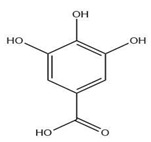
|
Anti-inflammatory, anti-neoplastic, anti-oxidant |
[54,59] |
| Leaves | Syringic acid (trace amount) |
Phenol |
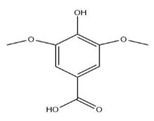
|
Anti-oxidant, antimicrobial. | [54,60] |
| Leaves | Isorhamnetin (0.118 mg/g) |
Flavonoid |
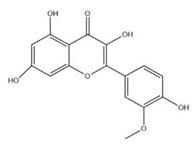
|
Anti-oxidant | [54,61] |
| Seeds | Myricetin (5.804 mg/g) |
Flavonoid |
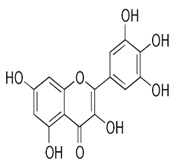
|
Potential prevention of diabetes mellitus and other diabetic complications | [54] |
| Seeds | Glucomoringin | Glucosinolates |
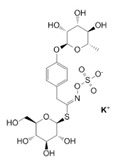
|
Anti-inflammatory, pain relieving, anti-oxidant, antihypertensive. |
[62] |
| Seeds | β-sitosterol | Phytosterol |
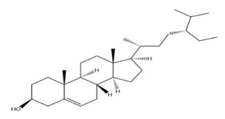
|
Anti-inflammatory | [63] |
| Seeds | Arachidic acid | Fatty acid |
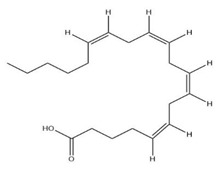
|
Increased breast milk production | [64] |
| Seeds | Oleic acid (70% w/w) | Fatty acid |

|
Reduces blood pressure and reduces free radical damage to the cell. |
[65] |
| Seeds | Myristic acid | Fatty acid |

|
Anxiolytic effect, used in membrane localization of the enzyme. |
[66] |
| Seeds | Palmitic acid | Fatty acid |

|
Trypanocidal and anti-leukemic effect | [67] |
| Seeds | Procyaniadin | Flavonoid |
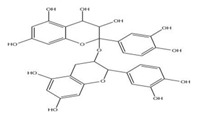
|
Cardioprotective | [68] |
| Flower | D-mannose | Carbohydrate |
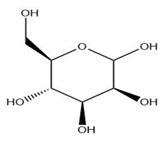
|
Treatment of deficiency caused by genetic defects, and acute urinary tract infections. |
[69] |
| Stem | β-sitosterol | Phytosterol |
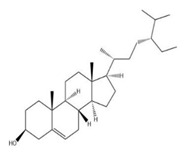
|
Anti-oxidant, cardiovascular, immunomodulatory |
[63] |
8.1. Antimicrobial and Antifungal Activity
M. oleifera ethanolic root extract contains a compound N-benzylethyl thioformate (an aglycone of deoxyniazimincin) responsible for the antimicrobial and antifungal effect toward an extensive array of microbes and fungi [44]. M. oleifera methanolic leaf extract may exert inhibition of urinary tract infections caused by Gram-negative and Gram-positive bacteria such as Klebsiella pneumoniae, Staphylococcus aureus, Escherichia coli, and Staphylococcus saprophyticus [69].
The inhibitory effect of extracts from leaves, seeds, and stems of M. oleifera has been specified in various fungal strains such as Aspergillus flavus, Aspergillus terreus, Aspergillus nidulans, Rhizoctonia solani, Aspergillus niger, Aspergillus oryzae, Fusarium solani, Penicillium sclerotigenum, Cladosporium cladosporioides, Trichophyton mentagrophytes, Penicillium species, Pullarium species [44]. M. oleifera seeds have active components 4-(alpha-L-rhamanosyloxy) benzyl isothiocyanates, which are believed to be responsible for their antimicrobial activity [70]. The juice of Moringa leaves also showed potential against human pathogenic bacteria [43]. The methanolic leaf extract has nearly 99% inhibition against Botrytis cinerea (a necrotrophic plant fungus) [71].
The fruit of M. oleifera contains alkaloids, flavonoids, and steroids, which have an inhibitory effect against the culture of Candida albicans by either denaturing the protein or inhibiting the germination of spores through the steroid ring they contain [72].
Strong inhibitory effects of moringa seed kernel extract were observed for Bacillus cereus, Staphylococcus aureus, Mucor species, and Aspergillus species. However, it was less effective against P. aeruginosa and E. coli. This indicated that, except for E. coli and P. aeruginosa, moringa seed kernel extract might be utilized to treat infections caused by these species [73]. A recent study has been conducted, which states that only apolar extract obtained from seeds of M. oleifera showed anti-microbial activity against Gram-positive bacteria [74].
8.2. Anti-Inflammatory Activity
A significant anti-inflammatory effect was observed in different parts of M. oleifera (leaf, pods, flowers, and roots). It was observed that the isolated compound (4-[2-o-Acetyl-alpha -l-rahamnoslyloxy) benzyl] thiocynate from Moringa possessed nitric oxide inhibitory activity and was subsequently found to be effective in Raw264.7 cell lines [75]. A compound derived from M. oleifera roots, known as aurnatiamide acetate and 1,3-dibenzylurea, inhibited TNF-α production [76]. Active compounds such as tannins, phenols, alkaloids, flavanoids, carotenoids β-sitosterol, vanillin, and moringin have anti-inflammatory properties [32]. The M. oleifera fruit extract blocked nuclear factor kappa B (NF κB) translocation, and the chloroform extract was found to be cytotoxic at high concentrations (500–1000 µg/mL) [77]. M. oleifera leaves extract was used in mice for treating atopic dermatitis in human keratinocytes and was found to be effective in reducing the expression of mannose receptor mRNA, thymic stromal lymphopoietin, and retinoic acid-related orphan receptor γT in ear tissues (Figure 4) [78].
Figure 4.
M. oleifera, as an oxidative and inflammatory marker, inhibits IKBα phosphorylation, thereby preventing NFKB (nuclear factor kappa B) inhibition. It prevents the nuclear translocation and dimerization of IkBα and NFKB, thereby inhibiting the formation of inflammatory proteins such as TNFα(tumor necrosis factor), COX-2(cyclooxygenase-2), IL6(interleukin -6), and iNos(inducible nitric oxide synthase) and thereby reducing the inflammation and curing other disorders like obesity, arthritis, cancer, diabetes, and ulcer.
8.3. Oxidative Stress
The results of M. oleifera were observed in methotrexate-induced mice. The study aimed to look into a probable palliative effect of M. oleifera extract on mice. The mice received the extract one week before administering methotrexate injection, and this treatment was continued for 12 days. The result showed that pretreatment with an extract of M. oleifera on mice poisoned with methotrexate could protect them from oxidative stress [79].
The antioxidant activity of ethanolic extract M. oleifera stems exhibited a protective effect against epidermal oxidative stress injury induced by H2O2 in keratinocytes. The result displayed that the stems showed antioxidant potential, and, therefore, can be used as an excellent and preventive source in animal epidermal oxidative stress injury [80].
The research investigated the antioxidant potential of Moringa leaves against diclofenac sodium-induced liver toxicity in animals. The researchers concluded that the extract was significantly effective against diclofenac-induced liver toxicity and, therefore, can be considered liver protective [81].
8.4. Anti-Oxidant Activity
Bioactive compounds such as glycosylates [82], isothiocyanates [62], thiocarbamates [83], flavonoids [84], and certain other compounds from Moringa pods have been investigated for reactive oxygen spices. The aqueous extract has been shown to be a potent free radical scavenger against free radicles [45]. Previous studies suggest that the antioxidant potential might be due to kaempferol, which is mainly found in plant leaves [43]. The synergistic outcome of Moringa was observed with piperine and curcumin on oxidative stress induced by beryllium toxicity in Wistar rats [85]. The alcoholic extract of the plant reduced glucose-induced cataractogenesis in isolated goat eye lenses by controlling GSH levels [86]. Myricetin, derived from the Moringa seed extract, has proved to be a better antioxidant than BHT (butylated hydroxytoluene) and alpha-tocopherol. M. oleifera leaf extract and compounds, such as isoquercetin, astragalin, and crypto-chlorogenic acid, help lower ROS in HEK-293 cells [87]. Moringa is also helpful in reducing plasma monoaldehyde (MDA) levels in fasting plasma glucose (FPG) concentration in healthy volunteers compared to the individuals fed with warm water. A dose-dependent upsurge in GSH and reduced MDA levels were observed with alcoholic extract of the plant without toxic effect till 100 mg/kg (Figure 4) [46].
8.5. Anti-Cancer Activity
Several parts of moringa (fruits, leaves, flowers, stems) have been shown to be beneficial against cancer, a deadly disease. The isolated compounds thiocarbamate and isothiocyanate from moringa act as inhibitors of tumor cells [15,47]. The dichloromethane fraction was found to be cytotoxic for MCF7 breast cancer cells [88]. Niazimincin has been projected as an effective chemopreventive agent in chemical carcinogenesis [44]. Alcoholic and hydro-methanolic extracts of fruits and leaves have shown significant tumor growth retardation in the melanoma mouse model [32]. Soluble cold distilled water from Moringa inhibited tumor cell growth and reduced ROS (reactive oxygen species) in cancer cells [45]. A recent study based on computational modelling suggests that M. oleifera contains rutin with the highest binding affinity with BRAC-1 (Breast Cancer Gene-1) [49].
8.6. Fertility and Anti-Fertility Activity
Adding to the list of beneficial effects of Moringa, the various parts of the plant possess fertility and abortion-inducing properties. The aqueous extract at a 200 and 400 mg/kg dose has been found to be more abortifacient and anti-fertility effects [44]. Recent studies on hot and cold extracts of leaves of M. oleifera propose that ingestion of Moringa before, after, and during pregnancy may lead to adverse fetal developmental outcomes by causing rigorous contraction of the uterine wall [89].
8.7. Hepatoprotective Activity
Among the numerous flavonoids (quercetin, kaempferol, isoquercetin, rhamnetin, etc.,) present in Moringa, quercetin in Moringa flowers is thought to be accountable for the hepatoprotective effect [44]. Methanolic extract at low dose showed changes in hepato-renal and hematological profile with significant changes in serum aminotransferase concentration, plasma cholesterol level, alkaline phosphate, bilirubin, and serum LPO levels. However, the higher dose of the extract altered total bilirubin, blood urea nitrogen, and non-protein nitrogen levels and decreased the clotting time [43]. Liver injuries induced by acetaminophen in Sprague-Dawley rats, where the standard drug taken was silymarin, Moringa showed similar hepatoprotective properties in these rats by dropping the levels of AST, ALT, and ALP [90]. The seeds were also found to be effective against carbon tetrachloride-induced liver fibrosis, as evidenced by a reduction in serum aminotransferase activity and globulin levels [91]. Treatment with this plant extract for about 21 days regularly as diet significantly reduced liver injury, and this effect was found due to alkaloid, quercetin, kaempferol, flavonoids, ascorbic acid, and benzyl glucosinolates in this plant [32].
8.8. Cardiovascular Activity
The freeze-dried aqueous and alcoholic extract of M. oleifera showed cardioprotective activity in animals induced with myocardial infarction by isoproterenol [92]. Chronic treatment of M. oleifera was effective on isoproterenol-induced hemodynamics and improved the levels of enzymes such as SOD, catalase, lactase dehydrogenase, glutathione peroxidase, and creatine kinase [92]. Butanolic extract has been proven to be a rich antioxidant source in rats with cardiac necrosis induced with isoproterenol. Moreover, it was found to significantly reduce inflammatory levels and myocardial necrosis due to the presence of the compound N-α-rhamnopyranosyl vincosamide [93]. Moringa leaves significantly lowered cholesterol levels by showing a protective effect on hypertensive rats. The active constituents believed to be responsible for this activity were identified as niazirmin A, niazirimin B, and niazimincin [32].
8.9. Anti-Ulcer/Gastroprotective Activity
Bisphenols and flavonoids found in moringa leaves showed a reduced level of ulcer index, duodenal ulcer, and stress ulcer in the ibuprofen-induced gastric ulcer model [32]. Moringa extract was shown to significantly reduce free radicals and neutralize the acidic behavior of gastric juice and have a protective effect on the development of gastric ulcer [94]. The presence of flavonoids in the plant has been shown to have a protective effect on ulcer formation by increasing capillary resistance and improving microcirculation, resulting in less cell injury [95].
8.10. Analgesic/Antipyretic Activity
Moringa leaf extract shows analgesic activity in almost all tree parts in central and peripheral animal models [32]. Multiple factions of alcoholic extracts such as petroleum ether, n-butanol, ethyl acetate, and dimethyl ether were found to have potent analgesic activity compared to standard aspirin [96]. At a dosage of 30–300 mg/kg, the polar and non-polar extract of leaves showed a remarkable drop in prostaglandin and bradykinin levels compared to the seed and root extract in a nociceptive study of formalin-induced paw edema [96]. The ether and ethyl acetate fractions of the seeds were studied in a hyperpyrexia model [97], keeping paracetamol as standard 200 mg/kg, and the extract proved to have the best antipyretic activity among all [45].
8.11. Neuropharmacological Activity
Previous results have proved that leaves extract reestablishes levels of monoamine in the brain and is very helpful in Alzheimer’s disease, while the in vitro activity of the ethanolic extract of the leaves showed an anticonvulsant effect on dopamine and norepinephrine levels, locomotor activity, and serotonin (5HT) in the brain in penicillin-induced convulsions [98,99]. The methanolic root extract in mice induced by pentobarbital sodium and diazepam has remarkable sedative effects on the CNS by improving sleep duration [35]. The toluene acetate fraction of the methanolic extract proved its potency as a possible nootropic agent [97]. The leaves have shown good anticonvulsant activity in a phenyl tetrazoline and maximal electric shock-induced model using male albino mice [98]. The aqueous extract of the roots blocked the epileptic seizures induced by penicillin in adult albino rats [99]. The ethanolic leaves extract exhibited anxiolytic properties, which were confirmed in behavioral experiments using the actophotometer and the rotarod device, respectively (Figure 5) [32].
Figure 5.
The various phytoconstituents present in M oleifera are responsible for numerous neuroprotective effects. M. oleifera is responsible for upregulating synaptic activity, cholinergic activity, dopaminergic activity, signaling of NrF2 (Nuclear factor erythroid 2-related factor 2), and simultaneously decreasing beta-amyloid toxicity and phosphorylation of tau proteins.
8.12. Neuropathic Pain
The broad spectrum of phytoconstituents of the leaves extract of Moringa has led researchers to develop a herbal alternative for treating chronic neuropathic pain caused by constriction. The need to limit conventional analgesics for this disease. Diabetic rats inflicted with neuropathic pain caused by chronic constriction were used for the study. Tests conducted before and after treatment with moringa leaves showed that they significantly altered the neuropathic pain condition in diabetic rats. It suggests that the drop in oxidative stress might be the underlying mechanism in treating neuropathic pain and thus could be used as an effective novel source for the same [100].
A research team explored the bio-guided fractions of Moringa seed extract on a diabetes-induced neuropathic pain model. After conducting various oxidative and other experimental studies on induced and treated rats, the team concluded that the extract-treated rats exhibited reasonable glycemic control and antinociceptive properties and proved to be a powerful neuroprotective agent with a high margin of safety (Figure 5) [101].
8.13. Wound Healing Effect
A significant effect in studies on wound healing after incision or excision was demonstrated for ethyl acetate, and water extract of M. oleifera leaves at a 300 mg/kg dose [43]. Studies reported that in preclinical studies, leaves, seeds, and dried pulp extracts have shown effective enhancement of wound closure, granuloma rupture strength, and reduction of skin rupture strength in the scar area [102]. Leaf extracts have shown promising results in diabetic animals by improving the downregulation of inflammatory markers and increasing the vascular endothelial growth factor level in the injured tissue [32]. Compounds present in aqueous extract have shown a considerable effect on diabetic foot ulcers by downregulating the levels of various inflammatory markers [102]. The researcher conducted an in vitro assay to select the standardized extract with the highest potency, which was then converted into a film for wound healing. The result showed that the aqueous extract had the maximum cell proliferation and migration properties among the different extracts [103].
8.14. Immunomodulatory Activity
Methanolic extract of the plant contains active constituents such as isothiocyanate and glycoside cyanide, which exhibit immunostimulatory activity and effectively enhance immunity. The recent review paper suggests that various bioactive compounds have been used to treat various immune-related disorders such as cancer, hypertension, and diabetes, thereby enhancing host immunity [104].
8.15. Hematological Activity
M. oleifera has demonstrated its significant benefits in hematological activities. A randomized, double-blind study suggests that aqueous leaf extract effectively improves women’s low hemoglobin levels (8–12 g/dL) [105]. Another study showed that M. oleifera leaves, when taken for 14 days by healthy volunteers, significantly improved platelet counts [32].
8.16. Anti-Obesity Activity
In a study, oral treatment with leaf powder of M. oleifera for a duration of nearly 49 days was found to significantly reduce body mass index (BMI) in rats suffering from hypercholesterolemia [106]. The mechanistic approach behind this was the downregulation of mRNA expression of the hormones resistin and leptin and the concomitant increase in regulation of the gene adiponectin in rats [32]. A recent study revealed the mechanistic approach for the anti-obesity effect of M. oleifera. The plant significantly improved lipid profile by reducing body weight. It also regulated adipogenesis-related genes, increased glucose tolerance, and decreased levels of hormones such as vaspin, leptin, and resistin (Figure 6) [107].
Figure 6.
M. oleifera as a promising anti-obesity agent. Various in-vitro findings suggest that supplements of M. oleifera cause direct inhibition of pancreatic lipase, thus reducing the conversion of triglycerides into simple. Moringa has fat storage regulation by upregulation of lipolysis-associated protein and down-regulating the expression of protein related to fat storage. It is also effective in the improvement of antioxidant levels. Besides these, Moringa is also responsible for increasing ghrelin levels and decreasing leptin, producing a feeling of satiety.
8.17. Anti-Allergic Activity
The ethanolic seeds extract reduced histamine release and also suppressed the anaphylaxis induced by anti-immunoglobulin G. The mechanism underlying this effect may be the membrane-stabilizing potential of mast cells in an oval albumin sensitization model [32].
8.18. Anti-Diabetic Activity
Moringa leaves showed excellent results in the glucose tolerance of Wistar and Goto-Kakizaki rats and also lowered blood glucose levels. The aqueous extract showed an antidiabetic effect in rats by controlling blood glucose levels, protein, sugar, and hemoglobin [45]. The leaves of the plant were found to lower glucose levels within three hours of intake, but not more than the standard drug glibenclamide. Moringa seeds, when administered orally, contain insulin-like proteins that have antigenic epitopes such as insulin and exhibit antihyperglycemic activity [108]. Leaf extracts of the plant also have antidiabetic activity as they increased CAT and MDA levels, reduced FPG levels, hemoglobin levels, LDL-C, and VLDL-C in type 2 diabetic patients and, most importantly, increased insulin levels in healthy subjects [109]. The seed extract of the plant reduced LPO levels and amplified the antioxidant effect in mice induced with streptozotocin, the seed extract was also able to reduce IgG, IgA, and IL -6 parameters and pancreatic β-cell activity, and it was suggested that the bioactive compound responsible for this effect were quercetin, kaempferol, glucomoringin, chlorogenic acid, and isothiocyanates [110].
8.19. Diuretic Activity
The alcoholic and aqueous root extract of M. oleifera significantly affects calcium oxalate urolithiasis in male rats. This reduction was observed due to the decrease in the retention level of oxalates, calcium and phosphates as well as serum urea nitrogen, creatinine, and uric acid [23].
8.20. Angiotensin Converting Enzyme (ACE) Activity
Compounds such as niazimin-A, niazicin-A, and niaziminin-B are stated to be present in the M. oleifera plant extract. These compounds were found to have potent antihypertensive activity when targeted to (ACE), an important enzyme of the renin-angiotensin system. The researchers observed this activity by protein–ligand docking and found that the compounds have a high affinity for the angiotensin-converting enzyme compared with captopril and enalapril (standard drug) [111]. The angiotensin enzyme rennin plays a prominent role in regulating blood pressure and leading to diseases such as hypertension, kidney disease, and other cardiovascular diseases. The study found that the role of M. oleifera with two other plants (Azadirachta indica and Hibiscus sabdariffa) inhibited the enzyme with percentage inhibition (71.8%, 74%, and 73.4%) compared to standard drugs (captopril and enalapril). The compound responsible for this activity of Moringa was termed β-sitosterol [112].
8.21. Anti-Venom Effect
The leaves of the plant extract have been shown to be effective against the venom of Naja Nigricollis (a snake species) in rats. This snake’s venom contains potent neurotoxins that cause the degradation of phospholipids at the plasma membrane, affecting the normal neurotransmission process and causing hemolysis and hemorrhage. The results showed that Moringa extract effectively cured acute anemia, and a remarkable increase in micronucleated polychromatic erythrocytes was observed in rats treated with M. oleifera [113].
8.22. Cytotoxicity Effect
The cytotoxic potential of M. oleifera on human mesenchymal myeloma cell lines is observed in methanolic extract. The results of the extracts showed a higher ID50 value than other extracts. The researchers also found that the alkaloids and flavonoids contained in the plant showed some similarity to vincristine and vinblastine by random experiments. Therefore, the plant can be recommended for the herbal treatment of myeloma patients [47].
It was found that the ethanolic leaves extract of M. oleifera contains active constituents that can alleviate cyclophosphamide-induced testicular toxicity by promoting genes associated with the functional integrity of spermatozoa and enlargement of DNA in spermatogonia. Therefore, the administration of the extract not only improved blood and intestinal hormone levels but also modulated the expression of genes responsible for Sertoli and spermatogonial cells [114].
9. Toxicity
Various experimental procedures were conducted to evaluate the toxic potential of the plant. A random selection of female non-pregnant Wistar albino rats was conducted with an oral dose of 2000 mg/kg aqueous methanol solution. Blood samples were collected, and the ALT, AST, and total bilirubin content were determined. The outcome of the study suggested that the lethal dose of the aqueous extract was higher than 2000 mg/kg in female rats [53].
A similar study was also conducted in Sprague-Dawley rats to evaluate the acute toxic potential of Moringa leaf powder. The experiment also found that oral administration of dried leaves up to 2000 mg/kg had no harmful or lethal effect on the human body [115].
The toxicity of M. oleifera seeds in rats was observed at acute and subacute levels (methanolic extract). Acute toxicity was seen at a dose of 4000 mg/kg, whereas mortality was observed at a dose of 5000 mg/kg. Therefore, in a nut shell, it could be summarized that the seed extract could be safe for nutritional use [116].
Experiments conducted for acute and subacute studies indicated that the stem bark extract did not cause any toxic effect in the acute and subacute toxic studies up to 2000 mg/kg. Therefore, the researchers concluded that the stem bark of M. oleifera can be considered non-toxic when administered orally [117].
The subacute toxicity test at a dose of 250, 500, and 1500 mg/kg was performed for 60 days. The result showed that the lethal dose was 1585 mg/kg without significant alterations in sperm quality, biochemical, and hematological parameters compared to the control group [105].
The acute toxic study (5000 mg/kg) and subacute (40–1000 mg/kg) results showed no adverse reaction during these studies. However, increased ALT, ALP, and lower creatinine levels were observed. Therefore, it could be concluded that consumption is safe, but intake should not surpass 70 gm/day to prevent cumulative toxicity [118].
10. Clinical Trials
To date, 25 clinical studies have been conducted on M. oleifera, fifteen of which have been completed. Nine of these fifteen studies addressed M. oleifera as part of a diet, while the remaining studies were limited to disease-specific drug interventions. Overall, the studies demonstrated the efficacy of using moringa for conditions such as malnutrition, chronic kidney disease, HIV infection, and reproductive health [119].
A clinical study highlighted the significant role of M. oleifera as an anti-asthmatic agent. In this study, researchers used seed kernels of M. oleifera to treat symptoms of bronchial asthma. Candidates were selected based on inclusion and exclusion criteria, with respiratory parameters and blood samples recorded before and at the end of three weeks of treatment with M. oleifera. The extract was administered to patients in the form of dried powder at a dose of 3 g twice daily for three weeks, and they were instructed to take water with the powder. Symptoms were graded as severe, moderate, and mild on a point table. The results indicate that symptoms and respiratory functions decreased; M. oleifera seeds can effectively treat bronchial asthma [120].
11. Phytopharmaceutical Formulations
Plant extracts have always attracted researchers’ attention for producing various pharmaceutical products. This process usually involves the production of medicinal products characterized by two things: first, the production of a stable product, and second, patient compliance. The advantage of Moringa plant extracts is that it appears to be exceedingly safe at the doses and in the amounts commonly utilized for therapeutic efficacy [20]. M. oleifera has been widely accepted in the research area, and scientists have used an array of approaches to develop various formulations. The various phytoformulations prepared using M. oleifera are tabulated below (Table 3).
Table 3.
Phytopharmaceutical formulations prepared using M. oleifera extract.
| Plant Part Used | Nature of Extract | Formulation | Method of Preparation and Polymers/Excipients Used | Application | Inference | References |
|---|---|---|---|---|---|---|
| Leaves | Ethyl acetate | Polyherbal formulation | Suspending method (carboxy methyl cellulose) |
Anti-ulcer |
|
[121] |
| Leaves | Aqueous/methanolic | Polyherbal ointments | Water in oil mixing (wool fat, hard paraffin, cetostearyl alcohol, PEG4000, PEG400, sorbitol mono-oleate, liquid paraffin, white beeswax, span 60, tween 60) |
Edema |
|
[122] |
| Seed | Oil | Micro-dispersion | Vortexing (Span 80, tween 80) |
Anti-inflammatory |
|
[123] |
| Leaves | Ethanolic | Lozenges | Wet granulation (Polyvinyl-pyrrolidone, magnesium stearate, menthol, vanillin) |
Anti-microbial activity |
|
[124] |
| Seed | Oil | Nano-micelle | Microemulsion method (Tween 80, Ethanol) |
Mitochondrial cancer cell apoptosis |
|
[125] |
| Leaves + fruits (Embelia ribes) | Hydro-alcoholic | Thermo-reversible in-situ nasal gel |
Cold method (poly (ethylene glycol) (PEG400), Pluronic F127, xanthum gum, carbopol 934), hydroxypropyl methylcellulose (HPMC K4M). |
Allergic rhinitis |
|
[126] |
| Leaves | Aqueous, ethanolic | Film dressing | Solvent casting method (Alginate, pectin) |
Wound healing |
|
[127] |
| Leaves | Ethanolic | Effervescent tablets | Wet granulation (70% ethanol, lactose, citric acid, tartaric acid, sodium bicarbonate, aspartame, PEG600) |
Anti-anemia |
|
[128] |
| Seed | Oil | Anti-inflammatory cream | Triturating process (Oleic acid, sodium hydroxide, potassium hydroxide, aluminum hydroxide, liquid ammonia, sodium benzoate). |
Anti-inflammatory |
|
[129] |
| Leaves | Silver NPs (AgNPs) | Shaking method (Silver nitrate) |
Anti-fungal activity |
|
[130] | |
| Leaves | Aqueous | Hydrocolloid film dressing | Solvent casting method (sodium alginate, pectin) |
Wound healing in diabetic condition |
|
[131] |
| Leaves | Hydro-alcoholic | In-situ gel | Cold technique (Pluronic F127, gellan gum, glycerine, Carbopol 934) |
Allergic rhinitis |
|
[132] |
| Leaves | Aqueous | Nanofibers impregnated onto Hydrocolloid film | Electrospinning (poly-(ethylene oxide) (PEO), sodium alginate, pectin, glycerol) |
Chronic Wound dressing |
|
[133] |
| Leaves | Aqueous/Ethanolic | Silver nanoparticle loaded Composites | Sodium hypophosphite, silver nitrate, citric acid, Kaolin (clay), Chitosan (LMW), sodium carbonate. | Anti-oxidant |
|
[134] |
| Leaves | Hydro-alcoholic | Polymeric microparticles (MPs) | Spray dried method (Chitosan) |
Exuding wound treatment |
|
[135] |
| Leaves | Aqueous | Iron oxide nanorods | Mixing method (Iron (III) chloride hexahydrate) |
Anti-bacterial property |
|
[136] |
| Seed | Oil | Suppositories | Pour molding method (Macrogol, dika fat, liquid paraffin, Polyethylene glycol 1000 & 4000, petroleum ether) |
Hemorrhoids |
|
[137] |
| Leaves | Ethanolic | Oral suspension | Stirring method (Sodium carboxymethyl cellulose, propylene glycol, benzoate, sorbitol) |
Hepato-protection against Isoniazid |
|
[138] |
| Leaves | Ethanolic | Granules | Wet granulation method (Gum Arabic, HPMC, Methocel K100M CR, magnesium stearate, Avicel PH200, tween 20, 40, 80, span 20, 40, Poloxamer 407, sodium lauryl sulphate) |
Anti-inflammatory and anti-arthritic |
|
[139] |
| Leaves | Powder | Chewable gummy tablets (CGT) | Heating and Congealing (Gelatin, high methoxyl pectin, mannitol, sucrose, propylene glycol, citric acid, corn oil, sodium benzoate) |
Evaluation of Chewable gummy tablets |
|
[140] |
| Seeds | n-hexane | Herbal hydrogel | Mixing method (Carbopol, propylparaben sodium, methylparaben sodium, propylene glycol, triethanolamine) |
Wound healing |
|
[141] |
| Leaves | Aqueous | Phytosome | Thin-layer hydration method (soy phosphatidylcholine, TrizolTM) |
Breast cancer |
|
[142] |
| Leaves | Ethanolic | Emulgel | Dissolving method (Carbopol 940, triethanolamine Tween 80) |
Anti-oxidant activity |
|
[143] |
12. Miscellaneous Uses
A study was performed on M. oleifera using the HPLC-based cyclo condensation method. Astragalin and isothiocyanates were used as markers for standardization of the plant. The conclusive result of the study suggests that the standardized method might be useful for assessing the quality of the development of cosmetic and natural health products [144].
The extract of M. oleifera leaves was helpful in eliminating the adverse effects of neem oil, which is used in aquaculture as an insecticide to control predators and parasites of fish fry. The researchers concluded that the extract of M. oleifera leaves eliminated the oxidative stress and toxicity caused by neem oil [145].
The lower yield of okra (Abelmoschus esculentus) was studied. The low production of these crops was due to infestation by pests and insects and poor soil nutrient content. In order to improve production conditions, different chemical pesticides were used, which brought further environmental risks. The use of M. oleifera aqueous leaf extract at different concentrations (1:30 and 1:40) proved beneficial for okra [146].
The efficacy of M. oleifera leaf and root extract was evaluated as a plant growth regulator and biopesticide in the wheat harvest. The researcher used different concentrations (5, 10, 12.5, 25% w/w, w/v, v/v) of Moringa leaf and root extract at different stages of the wheat plant. Significant plant growth was observed, resulting in increased yield and a decrease in aphid invasion [147].
M. oleifera is rich in macronutrients and micronutrients, vitamins, phytohormones, alkaloids, and flavonoids, which make this plant a multipurpose plant. Recent research has shown that Moringa extract is also helpful in tolerance to abiotic and biotic stress under stressful environmental conditions [148].
The therapeutic effect of bioactive constituents (flavonoids, alkaloids, tannins, isothyocyanin and beta-sitosterol) present in M. oleifera has been reported in chronic diseases such as hyperlipidemia [149], hypertension [150], hepatoprotective [151], anti-cancer [152], Alzheimer’s disease [153], Parkinson’s disease [154].
The combined effect of M. oleifera and praziquantel in rats was studied by a group of researchers. The seeds and leaves of M. oleifera were considered to evaluate their bioavailability with praziquantel and also the in vivo effects of the same were observed on Taenia crassiceps. The study showed that the combined action of both had a significant amount of cytocidal activity compared to the rats, which were only administered with praziquantel [155].
A variety of bioactive nutrients, such as flavonoids and vitamins, is available in the M. oleifera plant. The in vitro study conducted by a group of researchers focused on bioactive compounds that make up the nutritional potential of plants [156]. The conclusive statement of the researcher revealed that the high content of proteins, lipids, and sulfur-containing amino acids and the relative lack of toxic components make moringa a great nutritional alternative for humans [157].
The bioactive isolate palmitic acid from the leaf extract of Moringa has been attributed to broad therapeutic benefits. A team of researchers studied this isolate against a wide range of microbial and fungal strains. The results showed that it had the highest zone of inhibition for both fungal and microbial strains [4].
The polyphenols and flavonoids present in M. oleifera to scavenge free radicals could be useful in developing an anticancer drug delivery system. Nanoparticle technology was used to incorporate Moringa extract as a drug carrier. Treatment of HeLa cell lines with a single dose of the plant showed that the composite film of the plant extract was efficient in killing malignant cells compared to other isolated and purified phytocomponents on the market [158].
The bioactive components of M. oleifera inhibit the inflammatory markers in lipopolysaccharide-induced human macrophages. The induced macrophages were treated with M. oleifera extract. Thereafter the treated cells were tested for their anti-inflammatory and cellular mechanism. The results revealed that the extract suppressed mRNA expression of IL -6, IL -1, NF-κB (P50), PTGS2, and TNF-α. At the same time, the inhibition of phosphorylation of IκB-α and nuclear factor (NF)-κB was also observed in the study. The researchers’ final statement suggests that the blocking of NF-κB and IκB-α may be the reason for the inhibition of inflammation [159].
Apart from its wide use in preventing and curing various human diseases, Moringa is known for a number of non-medicinal uses, chief among which is its use for poultry, especially in curing viral infections (Newcastle Disease Virus) and other parasitic and bacterial diseases that cause mortality in animals [160]. The plant also serves as an important growth promoter for farmers in the production of tomatoes, peanuts, corn, and wheat in their early vegetative stages [161]. Environmentally friendly biopesticides are produced from this plant, which is cheap and easily available and helps in curing various plant diseases [162]. Studies have shown that the total crop production increased by 20–35% by using M. oleifera leaf extract, which is a good sign for increasing agricultural growth at a minimal cost [163]. The aqueous extract of M. oleifera is a source of various minerals and growth promoters (indole acetic acid, gibberellins, cytokines). It thus can be used as an effective plant biostimulant that could be a simple alternative to the artificial fertilizers and pesticides available in the market [161]. The methanolic extract of the plant is found to be rich in potassium, calcium, carotenoid, phenols, and zeatin, and when three sprays of this extract are applied on the oilseed rape plant, it is observed that the pods, twigs, height, and number of seeds increase significantly compared to the untreated control group [164]. The ability of the plant to resist drought is due to the plant hormone “zeatin”, which is present in large quantities in the methanolic extract, so the plants exposed to such climatic conditions when sprayed with the methanolic extract of Moringa showed improved growth characteristics compared with well-watered plants [165]. The tree is efficient in removing water hardness and is used by African tribes as a cheap source compared to chemical softeners [166]. A study conducted by several groups found that treating river water in African countries with Moringa seeds reduced color and microorganisms by 90% and microorganism (Escherichia coli) levels by up to 95%. Previous reports indicated that a water sample treated with M. oleifera seeds reduced the hardness content of the water by 50–70%, which used to be 80.3 g L−1 CaCO3 [167]. It has also been shown to be an effective solution for treating turbidity, alkalinity, and dissolved organic carbon. It is suggested that Moringa could be, to some extent, an alternative to chemical alum used to remove water turbidity [168]. Moringa is a good source for curing plant diseases and can be a good option for biopesticides [162]. Since various plant pathogens affect the plants, Pythium debaryanum-a pathogen responsible for damping-off disease-can be cured by adding leaves to the soil [169]. Nearly all plant part (fruits, flowers, leaves, seeds, roots) is believed to have different properties that can heal the body spiritually and psychologically [34].
13. Phytochemistry
Almost all parts of M. oleifera and its isolates have been studied for research. Based on the literature collected between 2010 and 2022, more than 90 compounds from the genus Moringa have been identified, many of which have therapeutic potential. The isolates fall into the category of proteins and amino acids [170], phenolic acids [171], carotenoids [172], alkaloids [173], glucosinolates [174], flavonoids [175], sterols [175], terpenes [176], tannins and saponins [177], fatty acids [178], glycosides [179], and polysaccharides [180] (Table 4 and Table 5).
Table 4.
Phytochemicals present in different plant part extracts of M. oleifera.
| S. No | Extract | Methanolic Roots | Ethanolic Roots | Methanolic Leaves | Ethanolic Leaves | Aqueous Leaves | Methanolic Seeds | Ethanolic Seeds | Aqueous Seeds | |
|---|---|---|---|---|---|---|---|---|---|---|
| Chemical | ||||||||||
| 1. | Alkaloid | + | + | + | + | + | + | + | + | |
| 2. | Tannins | + | + | + | + | + | + | - | + | |
| 3. | Flavonoids | + | + | + | + | + | - | + | - | |
| 4. | Saponins | + | + | + | + | + | - | + | - | |
| 5. | Terpenoids | + | + | + | + | + | - | - | - | |
| 6. | Glycosides | + | + | + | + | + | - | - | - | |
| 7. | Steroids | + | + | + | + | + | - | - | - | |
| 8. | Coumarins | - | - | + | + | - | - | - | - | |
| 9. | Proteins | - | - | - | - | - | + | + | - | |
| 10. | Starch | + | + | - | - | - | - | - | - | |
Table 5.
Select phytoconstituents of M. oleifera isolated through various techniques.
| Constituents | Concentrations # | Category | Technique Used | Reference |
|---|---|---|---|---|
| LEAVES | ||||
| Isoquercetin | 1575.28 μg/g (w/w) | Flavonoids | UPLC-ESI-MS/MS | [181] |
| Astragalin | 0.153 μg/g (w/w) | Flavonoids | HPLC | [182] |
| Isorhamnetin | 2.9 mg/g (w/w) | Flavonoids | HPLC | [183] |
| Daidzein | ND * | Flavonoid | HPLC | [183] |
| Apigenin | ND * | Aglycone | HPLC | [184] |
| Luteolin | ND * | Flavonoid | HPLC | [184] |
| Genistein | ND * | Flavonoid | HPLC | [184] |
| 4-(α-L-rhamnopyranosyloxy) benzyl glucosinolate | 33.9 mg/g | Glucosinolates | LC/MS | [184] |
| 4-[(2′ -O-acetyl-α-L-rhamnosyloxy) benzyl] Glucosinolate | 21.84 to 59.4 mg/g | Glucosinolates | HPLC | [184] |
| Epicatechin | 5.68 mg/g | Flavonoid | HPLC | [184] |
| Ferulic acid | 0.078 mg/g | Phenolic acid | HPLC | [184] |
| Caffeic acid | 0.409 mg/g | Phenolic acid | HPLC | [184] |
| Ellagic acid | 0.018 mg/g | Phenolic acid | HPLC & MS/MS | [185] |
| Sinalbin | 2.36 mg/g | Glucosinolates | HPLC | [185] |
| Sinapic acid | ND | Phenolic acid | HPLC &MS/MS | [185] |
| Chlorogenic acid | 0.018 mg/g | Phenolic acid | HPLC &MS/MS | [185] |
| Gallic acid | 1.034 mg/g | Phenolic acid | HPLC &MS/MS | [186] |
| Salicylic acid | 0.14 μg/g | Phenolic acid | HPLC GC MS | [186] |
| Vicenin-2 | 193.43 ng/mg | Flavonoid | HPLC PDA | [187] |
| Quercetin-3-O-(6′′-malonyl) glucoside | ND * | Flavonoid | HPLC DAD | [188] |
| Pyrrolemarumine-4′′ -O-α-Lrhamnopyranoside | NA ^ | Pyrole alkaloid | NMR | [189] |
| 4-[(4′ -O-Acetyl-α-L-rhamnosyloxy)benzyl] | 2.16 to 5.0 mg/g | Glucosinolates | HPLC | [190] |
| SEEDS | ||||
| Niazimicin | NA ^ | Isothiocyanates | HPLC | [173] |
| Niazirin | NA ^ | Isothiocyanates | HPLC | [173] |
| ROOTS | ||||
| Arachidic acid | ND * | Fatty acid | GC-MS | [190] |
| BARK | ||||
| β-Sitosterol-3-O-β-D-galactopyranoside | 26.67 mg/g | Glucoside | HPTLC | [190] |
ND—not detected; NA—not available; * lower but appreciable amount present; ^ compounds were isolated, but data not available; # the concentration of the constituent may vary according to geographical location.
The leaves contain larger amounts of calcium, potassium, proteins, and amino acids such as arginine and histidine [170].
M. oleifera leaves contain a higher concentration of phenolic acids and flavonoids, including cinnamic acid, sinapic acid, syringic acid, gentisic acid, gallic acid, ferulic acid, protocatechuic acid, vanillin, caffeic acid, o- coumaric acid, p-coumaric acid and epicatechin are phenolic acids. In contrast, quercetin, catechin, myricetin, and kaempferol fall under the category of flavonoids having excellent therapeutic activity and are listed above in Table 2 [171,175,177].
The carotenoid lutein is present in larger quantities in the leaves of M. oleifera [172]. The therapeutic efficacy of the plant is due to the active constituents present in the plant leaves. The leaves of the plant revealed nearly thirty-five compounds by gas chromatography–mass spectrometry. Among the thirty-five isolated compounds, some important ones isolated in the leaves were palmitoyl chloride, cis-vaccenic acid, 5-O-acetyl-thio-octyl, pregna-7-dien-3-ol-20-one, γ-sitosterol, β-l-rhamnofuranoside, and tetradecanoic acid [178].
Two new alkaloids, marumoside A and marumoside B, were also isolated from M. oleifera leaves; another type of alkaloid, aurnatiamide acetate was isolated from M. oleifera roots [173,178]. Moringin and moringinine are the two alkaloids present in the plant’s stem [179].
M. oleifera is a rich source of glucosinolates. The most abundant glucosinolate present in the species is 4-O-(α-L-rhamnopyranosyloxy)-benzyl glucosinolates, also known as glucomoringin [174].
A sterol isolate, β-sitosterol was found in seeds and leaves of M. oleifera [173]. Another type of sterol glycoside β-sitosterol-3-O-β-D-galactopyranoside was extracted from M. oleifera bark [174,175].
An interesting category of diterpenes and terpenes is found in M. oleifera leaves. Among which Phytol is diterpene alcohol, a major component of chlorophyll, and is found abundantly in leaves of the plant. At the same time, terpenes and their derivatives are present in trace amounts (linalool oxide, farnsylacetone, isolongifolene α-ionene, and α- and β-ionone), whereas hexahydro-farnesyl acetone can be found in abundance [176].
Seed oil extract of M. oleifera commonly contains tannins and saponins, which are responsible for numerous pharmacological activities [177].
Fatty acids such as arachidic acid, octacosanoic acid, oleic acid, palmitic acid, stearic acid, linolenic acid, behenic acid, and paullinic acid are found in M. oleifera seeds [178].
Two glycosides, namely niazirin and niazirinin were extracted from the ethanolic extract of M. oleifera [179].
The exudate of the gum contains a large number of poly saccharides such as D-galactose, L-arabinose, D-xylose, L-rhamnose, D-mannose, and -glucuronic acid [180]. The structure of some of the key phytoconstituents isolated from M. oleifera is shown in Figure 7.
Figure 7.
Structure of some key phytoconstituents isolated from M. oleifera.
14. Current Status
Moringa is a versatile plant with numerous benefits, and the current status of the plant suggests that it can be used in various pharmacological activities and their related formulations, biomedical applications, livestock, poultry, and fish production, enormously. Extensive research conducted in India, Nigeria, Brazil, and China during 2019–2022 has created a valuable resource for researchers worldwide. After an extensive study of this plant, it was found that M. oleifera has evolved to benefit humans in many ways. A large number of nutrients and phytoconstituents in this plant make it suitable for consumption by humans and animals. Due to its high anti-oxidant properties, it has become a pharmaceutical option for the production of formulations such as wound healing, anti-cancer, and anti-ageing etc. It is suitable not only for human use but also as a fertilizer in various forms extracted from M. oleifera. Besides its benefits, it also has severe toxic and abortifacient effects when taken in large quantities.
15. Conclusions and Future Perspective
The review summarizes various aspects of M. oleifera, including its worldwide research, ethnopharmacology, pharmacology activities, phytochemistry, phytopharmaceutical formulations, clinical studies, toxicology, and other miscellaneous parameters. The presence of alkaloids, phenolic acid, glycosides, sterols, glucosinolates, flavonoids, terpenes and fatty acids are responsible for the medicinal effects of M. oleifera. In addition, M. oleifera is also rich in compounds such as vitamins, micronutrients, and carotenoids which increase its medicinal value and consumption as a superfood. Pharmacological studies show that the active constituents of the plant have effectively cured various diseases such as neuropathic pain, cancer, hypertension, diabetes, obesity etc. Nevertheless, several phytochemicals have yet to be explored for their possible therapeutic benefits. In addition to its clinical use, the plant is also used as an effective biostimulant for farmers in their fields and has proven to be a cost-effective alternative. A literature survey suggested that much preclinical research has been carried out in the last few years. In the future, more clinical studies are required to investigate the efficacy of the plant in life-threatening diseases such as coronavirus outbreaks, an acquired immunodeficiency syndrome (AIDS), and various cancers. Moreover, further mechanism base studies are also proposed to explore the mechanistic approach of the plant to identify and isolate active or synergistic compounds. Overall, M. oleifera signifies its name, “Miracle tree,” and appears to be a phytopharmaceutical and functional food that, if consumed daily, can potentially treat various chronic diseases in humans and could be used by medical practitioners as a safer alternative to treat various ailments.
Acknowledgments
The authors are grateful to Banasthali Vidhyapith for providing all the necessary resources for completing this report. The authors also thank Brijmohan Bairwa, Department of Remote Sensing, Banasthali Vidyapith, for technical support during the geospatial analysis.
Author Contributions
Conceptualization, A.P. (Ashutosh Pareek); methodology, A.P. (Aaushi Pareek) and M.P.; software, M.P.; writing—original draft preparation, M.P., P.K., V.J., M.M.G. and A.P. (Aaushi Pareek); validation, Y.R., A.A.C. and M.P.; writing—review and editing, A.P. (Ashutosh Pareek), A.A.C., Y.R. and M.M.G.; supervision, A.P. (Ashutosh Pareek); project administration, A.P. (Ashutosh Pareek) and A.A.C. All authors have read and agreed to the published version of the manuscript.
Institutional Review Board Statement
Not applicable.
Informed Consent Statement
Not applicable.
Data Availability Statement
Not applicable.
Conflicts of Interest
The authors declare that they have no conflict of interest with respect to research, authorship, and/or publication of this article.
Funding Statement
This research received no external funding.
Footnotes
Disclaimer/Publisher’s Note: The statements, opinions and data contained in all publications are solely those of the individual author(s) and contributor(s) and not of MDPI and/or the editor(s). MDPI and/or the editor(s) disclaim responsibility for any injury to people or property resulting from any ideas, methods, instructions or products referred to in the content.
References
- 1.Fuglie L.J. Producing Food without Pesticides: Local Solutions to Crop Pest Control in West Africa. 1st ed. Church World Service; Dakar, Senegal: 1998. pp. 1–158. [Google Scholar]
- 2.Gandji K., Chadare F.J., Idohou R., Salako V.K., Assogbadjo A.E., Glèlè R.L.K. Status and utilisation of Moringa oleifera Lam: A review. Afr. Crop Sci. J. 2018;26:137–156. doi: 10.4314/acsj.v26i1.10. [DOI] [Google Scholar]
- 3.Chaudhary K., Chourasia S. Nutraceutical properties of Moringa oleifera: A review. EJPMR. 2017;4:646–655. [Google Scholar]
- 4.Gopinath L.R., Jeevitha S., Gokiladevi T., Archaya S. Isolation and Identification of therapeutic compounds from Moringa oleifera and its antimicrobial activity. IOSR-JPBS. 2017;12:1–10. [Google Scholar]
- 5.Kasolo J.N., Bimenya G.S., Ojok L., Ochieng J., Ogwal-Okeng J.W. Phytochemicals and uses of Moringa oleifera leaves in Ugandan rural communities. J. Med. Plant Res. 2010;20104:753–757. [Google Scholar]
- 6.Anwar F., Ashraf M., Bhanger M.I. Interprovenance variation in the composition of Moringa oleifera oilseeds from pakistan. J. Am. Oil Chem. Soc. 2005;82:45–51. doi: 10.1007/s11746-005-1041-1. [DOI] [Google Scholar]
- 7.Ansari M.M., Kumar S.D. Fortification of Food and Beverages with Phytonutrients. Public Health Nutr. 2012;2:241–253. [Google Scholar]
- 8.Choudhary M.K., Bodakhe S.H., Gupta S.K. Assessment of the antiulcer potential of Moringa oleifera root-bark extract in rats. J. Acupunct. Meridian Stud. 2013;6:214–220. doi: 10.1016/j.jams.2013.07.003. [DOI] [PubMed] [Google Scholar]
- 9.Posmontier B. The medicinal qualities of Moringa oleifera. Holist. Nurs. Pr. 2011;25:80–87. doi: 10.1097/HNP.0b013e31820dbb27. [DOI] [PubMed] [Google Scholar]
- 10.Aekthammarat D., Pannangpetch P., Tangsucharit P. Moringa oleifera leaf extract lowers high blood pressure by alleviating vascular dysfunction and decreasing oxidative stress in L-NAME hypertensive rats. Phytomedicine. 2019;54:9–16. doi: 10.1016/j.phymed.2018.10.023. [DOI] [PubMed] [Google Scholar]
- 11.Tayo G.M., Pone G.W., Komtangi M.C., Yondo G., Ngangout A.M., Mbida M. Anthelminthic Activity of Moringa oleifera Leaf Extracts Evaluated in Vitro on Four Developmental Stages of Haemonchus contortus from Goats. AJPS. 2014;5:1702–1710. doi: 10.4236/ajps.2014.511185. [DOI] [Google Scholar]
- 12.Hannan M.A., Kang J.Y., Mohibbullah M., Hong Y.K., Lee H., Choi J.S., Choi I.S., Moon I.S. Moringa oleifera with promising neuronal survival and neurite outgrowth promoting potentials. J. Ethnopharmacol. 2014;152:142–150. doi: 10.1016/j.jep.2013.12.036. [DOI] [PubMed] [Google Scholar]
- 13.Paikra B.K., Dhongade H.K.J., Gidwani B. Phytochemistry and Pharmacology of Moringa oleifera Lam. J Pharmacopunct. 2017;20:194–200. doi: 10.3831/KPI.2017.20.022. [DOI] [PMC free article] [PubMed] [Google Scholar]
- 14.Mallenakuppe R., Homabalegowda H., Gouri M.D., Basavaraju P.S., Chandrashekharaiah U.B. History, Taxonomy and Propagation of Moringa oleifera-A Review. Int. J. Life Sci. 2019;5:2322–2327. doi: 10.21276/SSR-IIJLS.2019.5.3.7. [DOI] [Google Scholar]
- 15.Guevara A.P., Vargas C., Sakurai H., Fujiwara Y., Hashimoto K., Maoka T., Kozuka M., Ito Y., Tokuda H., Nishino H. An antitumor promoter from Moringa oleifera Lam. Mutat. Res. 1999;440:181–188. doi: 10.1016/S1383-5718(99)00025-X. [DOI] [PubMed] [Google Scholar]
- 16.Vimala G., Gricilda Shoba F. A review on Antiulcer Activity of Few Indian Medicinal Plants. Int. J. Microbiol. 2014;2014:519590. doi: 10.1155/2014/519590. [DOI] [PMC free article] [PubMed] [Google Scholar]
- 17.Popoola J.O., Obembe O.O. Local knowledge, use pattern and geographical distribution of Moringa oleifera Lam. (Moringaceae) in Nigeria. J. Ethnopharmacol. 2013;150:682–691. doi: 10.1016/j.jep.2013.09.043. [DOI] [PubMed] [Google Scholar]
- 18.Swatią A., Virk A.K., Kumari C., Ali A., Garg P., Thakur P., Attri C., Kulshrestha S. Moringa oleifera—A never die tree: An overview. Asian J. Pharm. Clin. Res. 2018;11:57–65. doi: 10.22159/ajpcr.2018.v11i12.28049. [DOI] [Google Scholar]
- 19.Gopalakrishnan L., Doriya K., Kumar D.S. Moringa oleifera: A review on nutritive importance and its medicinal application. Food Sci. Hum. Wellness. 2016;5:49–56. doi: 10.1016/j.fshw.2016.04.001. [DOI] [Google Scholar]
- 20.Stohs S.J., Hartman M.J. Review of the Safety and Efficacy of Moringa oleifera. Phytother. Res. 2015;29:796–804. doi: 10.1002/ptr.5325. [DOI] [PMC free article] [PubMed] [Google Scholar]
- 21.Bhat S.K., Joy A.E. Antianxiety effect of ethanolic extract of leaves of Moringa oleifera in Swiss albino mice. Arch. Med. Health Sci. 2014;2:5–7. [Google Scholar]
- 22.Misra A., Srivastava S., Srivastava M. Evaluation of antidiarrheal potential of Moringa oleifera (Lam.) leaves. J. Pharmacogn. Phytochem. 2014;2:43–46. [Google Scholar]
- 23.Tahkur R.S., Soren G., Pathapati R.M., Buchineni M. Diuretic activity of Moringa oleifera leaves extract in swiss albino rats. J. Pharm. Innov. 2016;5:8–10. [Google Scholar]
- 24.Woldeyohannes M.G., Eshete G.T., Abiye A.A., Hailu A.E., Huluka S.A., Tadesse W.T. Antidiarrheal and Antisecretory Effect of 80% Hydromethanolic Leaf Extract of Moringa stenopetala Baker f. in Mice. Biochem. Res. Int. 2022;2022:2090–2247. doi: 10.1155/2022/5768805. [DOI] [PMC free article] [PubMed] [Google Scholar]
- 25.Zhang Y., Peng L., Li W., Dai T., Nie L., Xie J., Ai Y., Li L., Tian Y., Sheng J. Polyphenol Extract of Moringa oleifera Leaves Alleviates Colonic Inflammation in Dextran Sulfate Sodium-Treated Mice. Evid. Based Complement. Altern. Med. 2020;2020:6295402. doi: 10.1155/2020/6295402. [DOI] [PMC free article] [PubMed] [Google Scholar]
- 26.Karadi R.V., Gadge N.B., Alagawadi K.R., Savadi R.V. Effect of Moringa oleifera Lam. root-wood on ethylene glycol induced urolithiasis in rats. J. Ethnopharmacol. 2006;105:306–311. doi: 10.1016/j.jep.2005.11.004. [DOI] [PubMed] [Google Scholar]
- 27.Ghasi S., Nwobodo E., Ofili J.O. Hypocholesterolemic effects of crude extract of leaf of Moringa oleifera Lam in high-fat diet fed wistar rats. J. Ethnopharmacol. 2000;69:21–25. doi: 10.1016/S0378-8741(99)00106-3. [DOI] [PubMed] [Google Scholar]
- 28.Paliwal R., Sharma V., Pracheta A Review on Horse Radish Tree (Moringa oleifera): A Multipurpose Tree with High Economic and Commercial Importance. Asian J. Biotechnol. 2011;3:317–328. doi: 10.3923/ajbkr.2011.317.328. [DOI] [Google Scholar]
- 29.Debnath S., Guha D. Role of Moringa oleifera on enterochromaffin cell count and serotonin content of experimental ulcer model. Indian J. Exp. Biol. 2007;45:726–731. [PubMed] [Google Scholar]
- 30.Mahajan S.G., Mali R.G., Mehta A.A. Protective Effect of Ethanolic Extract of Seeds of Moringa oleifera Lam. Against Inflammation Associated with Development of Arthritis in Rats. J. Immunotoxicol. 2007;4:39–47. doi: 10.1080/15476910601115184. [DOI] [PubMed] [Google Scholar]
- 31.Rathi B.S., Bodhankar S.L., Baheti A.M. Evaluation of aqueous leaves extract of Moringa oleifera Linn for wound healing in albino rats. Indian J. Exp. Biol. 2006;44:898–901. [PubMed] [Google Scholar]
- 32.Bhattacharya A., Tiwari P., Sahu P.K., Kumar S. A review of the phytochemical and pharmacological characteristics of Moringa oleifera. J. Pharm. Bioallied Sci. 2018;10:181–191. doi: 10.4103/JPBS.JPBS_126_18. [DOI] [PMC free article] [PubMed] [Google Scholar]
- 33.Pandey A., Pandey R.D., Tripathi P., Gupta P.P., Haider J., Bhatt S., Singh A.V. Moringa oleifera Lam. (Sahijan)—A plant with a plethora of diverse therapeutic benefits: An Updated Retrospection. Int. J. Med. Aromat. 2012;1:1–8. doi: 10.4172/2167-0412.1000101. [DOI] [Google Scholar]
- 34.Meireles D., Gomes J., Lopes L. A review of properties, nutritional and pharmaceutical applications of Moringa oleifera: Integrative approach on conventional and traditional Asian medicine. Adv. Tradit. Med. 2020;20:495–515. doi: 10.1007/s13596-020-00468-0. [DOI] [Google Scholar]
- 35.Liu W.L., Wu B.F., Shang J.H., Wang X.F., Zhao Y.L., Huang A.X. Moringa oleifera seed ethanol extract and its active component kaempferol potentiate pentobarbital-induced sleeping behaviours in mice via a GABAergic mechanism. Pharm. Biol. 2022;60:810–824. doi: 10.1080/13880209.2022.2056207. [DOI] [PMC free article] [PubMed] [Google Scholar]
- 36.Gothai S., Arulselvan P., Tan W.S., Fakurazi S. Wound healing properties of ethyl acetate fraction of Moringa oleifera in normal human dermal fibroblasts. J. Intercult. Ethnopharmacol. 2016;5:1–6. doi: 10.5455/jice.20160201055629. [DOI] [PMC free article] [PubMed] [Google Scholar]
- 37.Toma A., Deyno S. Phytochemistry and pharmacological activities of Moringa oleifera. Indian, J. Pharmacol. 2014;4:222–231. [Google Scholar]
- 38.Tripathi B. Charaka Samhita, of Agnivesa. 3rd ed. Chaukambha Surbharati Prakashan; Varanasi, India: 1994. pp. 15–20. [Google Scholar]
- 39.Gupta K.A. Astanga Hridaya. 13th ed. Chaukambha Sanskrit Sansthan; Varanasi, India: 2000. pp. 5–17. [Google Scholar]
- 40.Sharma H.R. Kashyap Samhita. 3rd ed. Chaukhambha Sanskrit Sansthan; Varanasi, India: 2010. pp. 2–4. [Google Scholar]
- 41.Srikanthmurthy K.R. SharangadharaSamhita. 12th ed. Master Kheladi Lal and Sons; Benaras City, India: 1933. pp. 14–20. [Google Scholar]
- 42.Laksmipati V.S. Yogaratnakara. 7th ed. Chaukambha Sanskrit Sansthan; Varanasi, India: 1999. pp. 1–5. [Google Scholar]
- 43.Mishra G., Singh P., Verma R., Kumar S., Srivastav S., Jha K.K., Khosa R.L. Traditional uses, phytochemistry and pharmacological properties of Moringa oleifera plant: An overview. Der Pharmacia Lett. 2011;3:141–164. [Google Scholar]
- 44.Upadhyay P., Yadav M.K., Mishra S., Sharma P., Purohit S. Moringa oleifera: A review of the medical evidence for its nutritional and pharmacological properties. Int. J. Res. Pharm. Sci. 2015;5:12–16. [Google Scholar]
- 45.Singh A., Navneet. Ethnomedicinal, pharmacological and antimicrobial aspects of Moringa oleifera lam.: A review. J. Phytopharmacol. 2018;7:45–50. doi: 10.31254/phyto.2018.7110. [DOI] [Google Scholar]
- 46.Banik S., Biswas S., Karmakar S. Extraction, purification, and activity of protease from the leaves of Moringa oleifera. F1000Research. 2018;7:1151. doi: 10.12688/f1000research.15642.1. [DOI] [PMC free article] [PubMed] [Google Scholar]
- 47.Parvathy M.V.S., Umamaheshwari A. Cytotoxic Effect of Moringa oleifera Leaf Extracts on Human Multiple Myeloma Cell Lines. Trends Medical Res. 2007;2:44–50. [Google Scholar]
- 48.Venkatesh N., Devi K.G., Venkateswarlu G., Sudhakar A.M.S. effect of hydroalcoholic extract of Moringa oleifera leaves on fertility hormone and sperm quality of male albino rats. Int. J. Curr. Med. Pharm. Res. 2019;1:83–87. [Google Scholar]
- 49.Balogun T.A., Buliamimu K.D., Chukwudozie O.S., Tiamiyu Z.A., Idowu T.J. Anticancer Potential of Moringa oleifera on BRCA-1 Gene: Systems Biology. Bioinform. Biol. Insights. 2021;15:11779322211010703. doi: 10.1177/11779322211010703. [DOI] [PMC free article] [PubMed] [Google Scholar]
- 50.Alam P., Elkholy S.F., Mahfouz S.A., Alam P., Sharaf-Eldin M.A. HPLC based estimation and extraction of rutin, quercetin and gallic acid in Moringa oleifera plants grown in Saudi Arabia. J. Chem. Pharm. 2016;8:1243–1246. [Google Scholar]
- 51.Singh B.N., Singh B.R., Singh R.L. Oxidative DNA damage protective activity, antioxidant and anti-quorum sensing potentials of Moringa oleifera. Food Chem. Toxicol. 2009;47:1109–1116. doi: 10.1016/j.fct.2009.01.034. [DOI] [PubMed] [Google Scholar]
- 52.Ndong M., Uehara M., Katsumata S., Suzuki K. Effects of oral administration of Moringa oleifera Lam on glucose tol-erance in Goto-Kakizaki and Wistar rats. J. Clin. Biochem. Nutri. 2007;40:229–233. doi: 10.3164/jcbn.40.229. [DOI] [PMC free article] [PubMed] [Google Scholar]
- 53.Zhang M., Hettiarachchy S.N., Horax R., Kannan A., Praisoody M.D.A., Muhundan A., Mallangi C.R. Phytochemicals, antioxidant and antimicrobial activity of Hibiscus sabdariffa, Centella asiatica, Moringa oleifera and Murraya koenigii leaves. J. Med. Plants Res. 2011;5:6672–6680. [Google Scholar]
- 54.Leone A., Spada A., Battezzati A., Schiraldi A., Aristil J., Bertoli S. Cultivation, genetic, ethnopharmacology, phytochemistry and pharmacology of Moringa oleifera leaves: An overview. Int. J. Mol. Sci. 2015;16:12791–12835. doi: 10.3390/ijms160612791. [DOI] [PMC free article] [PubMed] [Google Scholar]
- 55.Sharifi-Rad J., Quispe C., Castillo C.M.S., Caroca R., Lazo-Vélez M.A., Antonyak H., Polishchuk A., Lysiuk R., Oliinyk P., Masi L.D., et al. Phytochemicals for the Prevention and Treatment of Oxidative Stress-Induced Diseases. World J. Gastrointest. Endosc. 2022;22:1–9. [Google Scholar]
- 56.Zduńska K., Dana A., Kolodziejczak A., Rotsztejn H. Antioxidant Properties of Ferulic Acid and Its Possible Application. Skin Pharmacol. Physiol. 2018;31:332–336. doi: 10.1159/000491755. [DOI] [PubMed] [Google Scholar]
- 57.Chung T.W., Moon S.K., Chang Y.C., Ko J.H., Lee Y.C., Cho G., Kim S.H., Kim J.G., Kim C.H. Novel and therapeutic effect of caffeic acid and caffeic acid phenyl ester on hepatocarcinoma cells: Complete regression of hepatoma growth and metastasis by dual mechanism. FASEB J. 2004;18:1670–1681. doi: 10.1096/fj.04-2126com. [DOI] [PubMed] [Google Scholar]
- 58.Pandi A., Kalappan V.M. Pharmacological and therapeutic applications of Sinapic acid—An updated review. Mol. Biol. Rep. 2021;48:3733–3745. doi: 10.1007/s11033-021-06367-0. [DOI] [PubMed] [Google Scholar]
- 59.Alhakmani F., Kumar S., Khan S.A. Estimation of total phenolic content, in-vitro antioxidant and anti-inflammatory activity of flowers of Moringa oleifera. Asian Pac. J. Trop. Biomed. 2013;3:623–627. doi: 10.1016/S2221-1691(13)60126-4. [DOI] [PMC free article] [PubMed] [Google Scholar]
- 60.Bennour N., Mighri H., Eljani H., Zammouri T., Akrout A. Effect of Solvent Evaporation Method on Phenolic Compounds and the Antioxidant Activity of Moringa oleifera Cultivated in Southern Tunisia. S. Afr. J. Bot. 2020;129:181–190. doi: 10.1016/j.sajb.2019.05.005. [DOI] [Google Scholar]
- 61.Riaz A., Rasul A., Hussain G., Zahoor M.K., Jabeen F., Subhani Z., Younis T., Ali M., Sarfraz I., Selamoglu Z. Astragalin: A Bioactive Phytochemical with Potential Therapeutic Activities. Adv. Pharmacol. Sci. 2018;2018:9794625. doi: 10.1155/2018/9794625. [DOI] [PMC free article] [PubMed] [Google Scholar]
- 62.Borgonovo G., De Petrocellis L., Schiano Moriello A., Bertoli S., Leone A., Battezzati A., Mazzini S., Bassoli A. Moringin, A Stable Isothiocyanate from Moringa oleifera, activates the Somatosensory and Pain Receptor TRPA1 Channel In Vitro. Molecules. 2020;25:976. doi: 10.3390/molecules25040976. [DOI] [PMC free article] [PubMed] [Google Scholar]
- 63.Liao P.-C., Lai M.-H., Hsu K.-P., Kuo Y.-H., Chen J., Tsai M.-C., Li C.-X., Yin X.-J., Jeyashoke N., Chao L.K.-P. Identification of β-Sitosterol as in Vitro Anti-Inflammatory Constituent in Moringa oleifera. J. Agric. Food Chem. 2018;66:10748–10759. doi: 10.1021/acs.jafc.8b04555. [DOI] [PubMed] [Google Scholar]
- 64.Sari K., Sirajuddin S., Maddeppungeng M., Hadju V., Saleh A., Hastuti H. Moringa oleifera Intake during Pregnancy and Breastfeeding toward Docosahexaenoic Acid and Arachidonic Acid Levels in Breast Milk. Open Access Maced. J. Med. Sci. 2020;8:757–761. doi: 10.3889/oamjms.2020.4614. [DOI] [Google Scholar]
- 65.Snehal M., Parag G., Jyotsna W., Satyanarayan N.N. Intensified synthesis of structured lipids from oleic acid rich moringa oil in the presence of supercritical CO2. Food Bioprod. Process. 2020;112:86–95. [Google Scholar]
- 66.Kaur G., Invally M., Sanzagiri R., Buttar H.S. Evaluation of the antidepressant activity of Moringa oleifera alone and in combination with fluoxetine. J. Ayurveda Integr. Med. 2015;6:273–279. doi: 10.4103/0975-9476.172384. [DOI] [PMC free article] [PubMed] [Google Scholar]
- 67.Korbecki J., Bajdak-Rusinek K. The effect of palmitic acid on inflammatory response in macrophages: An overview of molecular mechanisms. Inflamm. Res. 2019;68:915–932. doi: 10.1007/s00011-019-01273-5. [DOI] [PMC free article] [PubMed] [Google Scholar]
- 68.Rue E.A., Rush M.D., Van Breemen R.B. Procyanidins: A comprehensive review encompassing structure elucidation via mass spectrometry. Phytochem. Rev. 2018;17:1–16. doi: 10.1007/s11101-017-9507-3. [DOI] [PMC free article] [PubMed] [Google Scholar]
- 69.Maurya S.K., Singh A.K. Clinical Efficacy of Moringa oleifera Lam. Stems Bark in Urinary Tract Infections. Int. Sch. Res. Not. 2014;2014:906843. doi: 10.1155/2014/906843. [DOI] [PMC free article] [PubMed] [Google Scholar]
- 70.Padla E.P., Solis L.T., Levida R.M., Shen C.C., Ragasa C.Y. Antimicrobial isothiocyanates from the seeds of Moringa oleifera Lam. Z. Für Nat. C. 2012;67:557–564. doi: 10.1515/znc-2012-11-1205. [DOI] [PubMed] [Google Scholar]
- 71.Ahmadua T., Ahmad K., Ismail S.I., Rashed O., Asib N., Omar D. Antifungal efficacy of moringa oliefera leaves and seed extract against Botrytis cinerea causing graymold disease of tomato. Braz. J. Biol. 2020;81:1007–1022. doi: 10.1590/1519-6984.233173. [DOI] [PubMed] [Google Scholar]
- 72.Moodley J.S., Krishna S.B.N., Pillay K. Green synthesis of silver nanoparticles from Moringa oleifera leaf extracts and its antimicrobial potential. Adv. Nat. Sci. Nanosci. Nanotechnol. 2018;9:1–10. doi: 10.1088/2043-6254/aaabb2. [DOI] [Google Scholar]
- 73.Dinesha B.L., Nidoni U., Ramachandra. C.T., Naik N., Sankalpa K.B. Effect of extraction methods on physicochemical, nutritional, antinutritional, antioxidant and antimicrobial activity of Moringa (Moringa oleifera Lam.) seed kernel oil. J. Appl. Nat. Sci. 2018;10:287–295. doi: 10.31018/jans.v10i1.1619. [DOI] [Google Scholar]
- 74.Anzano A., De Falco B., Ammar M., Ricciardelli A., Grauso L., Sabbah M., Capparelli R., Lanzotti V. Chemical Analysis and Antimicrobial Activity of Moringa oleifera Lam. Leaves and Seeds. Molecules. 2022;27:8920. doi: 10.3390/molecules27248920. [DOI] [PMC free article] [PubMed] [Google Scholar]
- 75.Tan W.S., Arulselvan P., Karthivashan G., Fakurazi S. Moringa oleifera Flower Extract Suppresses the Activation of Inflammatory Mediators in Lipopolysaccharide-Stimulated RAW 264.7 Macrophages via NF-κB Pathway. Mediators Inflamm. 2015;2015:720171. doi: 10.1155/2015/720171. [DOI] [PMC free article] [PubMed] [Google Scholar]
- 76.Cuellar-Núñez M.L., Gonzalez de Mejia E., Loarca-Piña G. Moringa oleifera leaves alleviated inflammation through downregulation of IL- 2, IL- 6, and TNF- α in a colitis associated colorectal cancer model. Int. Food Res. J. 2021;144:110318. doi: 10.1016/j.foodres.2021.110318. [DOI] [PubMed] [Google Scholar]
- 77.Abdel-Daim M.M., Khalil S.R., Awad A., Abu Zeid E.H., El-Aziz R.A., El-Serehy H.A. Ethanolic Extract of Moringa oleifera Leaves Influences NF-κB Signaling Pathway to Restore Kidney Tissue from Cobalt-Mediated Oxidative Injury and Inflammation in Rats. Nutrients. 2020;12:1031. doi: 10.3390/nu12041031. [DOI] [PMC free article] [PubMed] [Google Scholar]
- 78.Choi E.J., Debnath T., Tang Y., Ryu Y.B., Moon S.H., Kim E.K. Topical application of Moringa oleifera leaf extract ameliorates experimentally induced atopic dermatitis by the regulation of Th1/Th2/Th17 balance. Biomed. Pharmacother. 2016;84:870–877. doi: 10.1016/j.biopha.2016.09.085. [DOI] [PubMed] [Google Scholar]
- 79.Soliman M.M., Al-Osaimi S.H., Hassan Mohamed E., Aldharani A., Alkhedaide A., Althobaiti F., Mohamed W.A. Protective effects of Moringa oleifera Leaf Extract against Methotrexate-Induced Oxidative Stress and Apoptosis on Mouse Spleen. Evid. -Based Complement. Altern. Med. 2020;2020:6738474. doi: 10.1155/2020/6738474. [DOI] [PMC free article] [PubMed] [Google Scholar]
- 80.Zhou Y., Yang W., Li Z., Luo D., Li W., Zhang Y., Wang X., Fang M., Chen Q., Jin X. Moringa oleifera stem extract protect skin keratinocytes against oxidative stress injury by enhancement of antioxidant defense systems and activation of PPARα. Biomed. Pharmacother. 2018;107:44–53. doi: 10.1016/j.biopha.2018.07.152. [DOI] [PubMed] [Google Scholar]
- 81.El-Hadary A.E., Ramadan M.F. Antioxidant traits and protective impact of Moringa oleifera leaf extract against diclofenac sodium-induced liver toxicity in rats. J. Food Biochem. 2019;43:e12704. doi: 10.1111/jfbc.12704. [DOI] [PubMed] [Google Scholar]
- 82.Nunthanawanich P., Sompong W., Sirikwanpong S., Mäkynen K., Adisakwattana S., Dahlan W., Ngamukote S. Moringa oleifera aqueous leaf extract inhibits reducing monosaccharide-induced protein glycation and oxidation of bovine serum albumin. Springer Plus. 2016;5:1098. doi: 10.1186/s40064-016-2759-3. [DOI] [PMC free article] [PubMed] [Google Scholar]
- 83.Albuquerque Costa R., de Sousa O.V., Hofer E., Mafezoli J., Barbosa F.G., Vieira R. Thiocarbamates from Moringa oleifera Seeds Bioactive against Virulent and Multidrug-Resistant Vibrio Species. BioMed Res. Int. 2017;2017:7963747. doi: 10.1155/2017/7963747. [DOI] [PMC free article] [PubMed] [Google Scholar]
- 84.Vergara-Jimenez M., Almatrafi M.M., Fernandez M.L. Bioactive Components in Moringa oleifera Leaves Protect against Chronic Disease. Antioxidant. 2017;6:91. doi: 10.3390/antiox6040091. [DOI] [PMC free article] [PubMed] [Google Scholar]
- 85.Agrawal N.D., Nirala S.K., Shukla S., Mathur R. Co-administration of adjuvants along with Moringa oleifera attenuates beryllium-induced oxidative stress and histopathological alterations in rats. Pharm. Biol. 2015;53:1465–1473. doi: 10.3109/13880209.2014.986685. [DOI] [PubMed] [Google Scholar]
- 86.Sasikala V., Rooban B.N., Priya S.G., Sahasranamam V., Abraham A. Moringa oleifera prevents selenite-induced cataractogenesis in rat pups. J. Ocul. Pharmacol. Ther. 2010;26:441–447. doi: 10.1089/jop.2010.0049. [DOI] [PubMed] [Google Scholar]
- 87.Vongsak B., Mangmool S., Gritsanapan W. Antioxidant Activity and Induction of mRNA Expressions of Antioxidant Enzymes in HEK-293 Cells of Moringa oleifera Leaf Extract. Planta Med. 2015;81:1084–1089. doi: 10.1055/s-0035-1546168. [DOI] [PubMed] [Google Scholar]
- 88.Mohd Fisall U.F., Ismail N.Z., Adebayo I.A., Arsad H. Dichloromethane fraction of Moringa oleifera leaf methanolic extract selectively inhibits breast cancer cells (MCF7) by induction of apoptosis via upregulation of Bax, p53 and caspase 8 expressions. Mol. Biol. Rep. 2021;48:4465–4475. doi: 10.1007/s11033-021-06466-y. [DOI] [PubMed] [Google Scholar]
- 89.Attah A.F., Moody J.O., Sonibare M.A., Salahdeen H.H., Akindele O.O., Nnamani P.O., Diyaolu O.A., Raji Y. Aqueous extract of Moringa oleifera leaf used in Nigerian ethnomedicine alters conception and some pregnancy outcomes in Wistar rat. S. Afr. J. Bot. 2020;129:255–262. doi: 10.1016/j.sajb.2019.07.041. [DOI] [Google Scholar]
- 90.Sharifudin S.A., Fakurazi S., Hidayat M.T., Hairuszah I., Aris M., Moklas M., Arulselvan P. Therapeutic potential of Moringa oleifera extracts against acetaminophen-induced hepatotoxicity in rats. Pharm. Biol. 2013;51:279–288. doi: 10.3109/13880209.2012.720993. [DOI] [PubMed] [Google Scholar]
- 91.Hamza A.A. Ameliorative effects of Moringa oleifera Lam seed extract on liver fibrosis in rats. Food Chem. Toxicol. 2010;48:345–355. doi: 10.1016/j.fct.2009.10.022. [DOI] [PubMed] [Google Scholar]
- 92.Nandave M., Ojha S.K., Joshi S., Kumari S., Arya D.S. Moringa oleifera leaf extract prevents isoproterenol-induced myocardial damage in rats: Evidence for an antioxidant, antiperoxidative, and cardioprotective intervention. J. Med. Food. 2009;12:47–55. doi: 10.1089/jmf.2007.0563. [DOI] [PubMed] [Google Scholar]
- 93.Panda S., Kar A., Sharma P., Sharma A. Cardioprotective potential of N,alpha-L-rhamnopyranosyl vincosamide, an indole alkaloid, isolated from the leaves of Moringa oleifera in isoproterenol induced cardiotoxic rats: In vivo and in vitro studies. Bioorganic Med. Chem. Lett. 2012;23:959–962. doi: 10.1016/j.bmcl.2012.12.060. [DOI] [PubMed] [Google Scholar]
- 94.Ijioma S.N., Nwaogazi E.N., Nwankwo A.A., Oshilonya H., Ekeleme C.M., Oshilonya L.U. Histological exhibition of the gastroprotective effect of Moringa oleifera leaf extract. Comp. Clin. Pathol. 2018;27:327–332. doi: 10.1007/s00580-017-2594-0. [DOI] [PMC free article] [PubMed] [Google Scholar]
- 95.Mallya R., Chatterjee P.K., Vinodini N.A., Chatterjee P., Mithra P. Moringa oleifera Leaf Extract: Beneficial Effects on Cadmium Induced Toxicities—A review. J. Clin. Diagn. Res. 2017;11:CE01. doi: 10.7860/JCDR/2017/21796.9671. [DOI] [PMC free article] [PubMed] [Google Scholar]
- 96.Martínez-Gonzálezb C.L., Martíneza L., Martínez-Ortizb E.J., González-Trujanoa M.E., Déciga-Camposc M., Ventura-Martínezd R., Díaz-Revale I. Moringa oleifera, a species with potential analgesic and anti-inflammatory activities. Biomed. Pharmacother. 2017;87:482–488. doi: 10.1016/j.biopha.2016.12.107. [DOI] [PubMed] [Google Scholar]
- 97.Mohan M., Kaul N., Punekar A., Girnar R., Junnare P., Patil L. Nootropic activity of Moringa oleifera leaves. J. Nat. Remedies. 2005;5:59–62. [Google Scholar]
- 98.Amrutia J.N., Lala M., Srinivasa U., Shabaraya A.R., Semuel M.R. Anticonvulsant activity of Moringa oleifera leaf. Int. Res. J. Pharm. 2011;2:160–162. [Google Scholar]
- 99.Ray K., Guha D. Effect of Moringa oleifera root extract on penicillin-induced epileptic rats. Biog. Amines. 2005;19:223–231. doi: 10.1163/156939105774288780. [DOI] [Google Scholar]
- 100.Khongrum J., Wattanathorn J., Muchimapura S., Thukhum-mee W., Thipkaew C., Wannanon P., Tong-Un T. Moringa oleifera Leaves Extract Attenuates Neuropathic Pain Induced by Chronic Constriction Injury. Am. J. Appl. Sci. 2012;9:1182–1187. [Google Scholar]
- 101.Raafat K., Hdaib F. Neuroprotective Effects of Moringa oleifera: Bio-guided GC-MS Identification of Active Compounds in Diabetic Neuropathic Pain Model. Chin. J. Integr. Med. 2017 doi: 10.1007/s11655-017-2758-4. Online ahead of print . [DOI] [PubMed] [Google Scholar]
- 102.Muhammad A.A., Arulselvan P., Cheah P.S., Abas F., Fakurazi S. Evaluation of wound healing properties of bioactive aqueous fraction from Moringa oleifera Lam on experimentally induced diabetic animal model. Drug Des. Devel. Ther. 2016;10:1715–1730. doi: 10.2147/DDDT.S96968. [DOI] [PMC free article] [PubMed] [Google Scholar]
- 103.Awodele O., Oreagba I.A., Odoma S., Jaime A., Da Silva T., Osunkalu V.O. Toxicological evaluation of the aqueous leaf extract of Moringa oleifera Lam. (Moringaceae) J. Ethnopharmacol. 2012;139:330–336. doi: 10.1016/j.jep.2011.10.008. [DOI] [PubMed] [Google Scholar]
- 104.Mehwish H.M., Rajoka M.S., Xiong Y., Zheng K., Xiao H., Liu Z., Zhu Q., He Z. Moringa oleifera—A Functional Food and Its Potential Immunomodulatory Effects. Food Rev. Int. 2020;38:1533–1552. doi: 10.1080/87559129.2020.1825479. [DOI] [Google Scholar]
- 105.Suzana D., Suyatna F.D., Andrajati R., Sari S.P., Mun’im A. Effect of Moringa oleifera leaves extract against hematology and blood biochemical value of patients with iron deficiency anaemia. J. Young Pharm. 2017;9:79–84. doi: 10.5530/jyp.2017.1s.20. [DOI] [Google Scholar]
- 106.Bais S., Singh G.S., Sharma R. Anti-obesity and hypolipidemic activity of Moringa oleifera leaves against high fat diet-induced obesity in rats. Adv Biol. 2014;2014:162914. doi: 10.1155/2014/162914. [DOI] [Google Scholar]
- 107.Redha A.A., Perna S., Riva A., Petrangolini G., Peroni G., Nichetti M., Iannello G., Naso M., Faliva M.A., Rondanelli M. Novel insights on anti-obesity potential of the miracle tree, Moringa oleifera: A systematic review. J. Funct. Foods. 2021;84:104600. doi: 10.1016/j.jff.2021.104600. [DOI] [Google Scholar]
- 108.Al-maliki A., El Rabey H.A. The Antidiabetic Effect of Low Doses of Moringa oleifera Lam. Seeds on Streptozotocin Induced Diabetes and Diabetic Nephropathy in Male Rats. Biomed Res. Int. 2015;2015:381040. doi: 10.1155/2015/381040. [DOI] [PMC free article] [PubMed] [Google Scholar]
- 109.Villarruel-López A., López-de la Mora D.A., Vázquez-Paulino O.D., Puebla-Mora A.G., Torres-Vitela M.R., Guerrero-Quiroz L.A., Nuño K. Effect of Moringa oleifera consumption on diabetic rats. BMC Complement. Altern. Med. 2018;18:120–127. doi: 10.1186/s12906-018-2180-2. [DOI] [PMC free article] [PubMed] [Google Scholar]
- 110.Azad S.B., Ansari P., Azam S., Hossain S.M., Shahid M.I., Hasan M., Hannan J. Anti-hyperglycaemic activity of Moringa oleifera is partly mediated by carbohydrase inhibition and glucose-fibre binding. Biosci. Rep. 2017;37:BSR20170059. doi: 10.1042/BSR20170059. [DOI] [PMC free article] [PubMed] [Google Scholar]
- 111.Khan H., Jaiswal V., Kulshreshtha S., Khan A. Potential Angiotensin Converting Enzyme Inhibitors from Moringa oleifera. Recent Patents Biotechnol. 2019;13:239–248. doi: 10.2174/1872208313666190211114229. [DOI] [PubMed] [Google Scholar]
- 112.Khan H., Hussain T., Kataria M., Seth A., Malik M., Dash A., Chand S., Khan M. Role of selective Bioactive Compounds as an Angiotensin Converting Enzyme Inhibitor. Res. Sq. 2020;7:1–25. [Google Scholar]
- 113.Adeyi A.O., Ajisebiola S.B., Adeyi E.O., Alimba C.G., Okorie U.G. Antivenom activity of Moringa oleifera leave against pathophysiological alterations, somatic mutation and biological activities of Naja nigricollis venom. Sci. Afr. 2020;8:68–76. doi: 10.1016/j.sciaf.2020.e00356. [DOI] [Google Scholar]
- 114.Nayak G., Rao A., Mullick P., Mutalik S., Kalthur S.G., Adiga S.K., Kalthur G. Ethanolic extract of Moringa oleifera leaves alleviate cyclophosphamide induced testicular toxicity by improving endocrine function and modulating cell specific gene expression in mouse testis. J Ethnopharmacol. 2020;259:112922. doi: 10.1016/j.jep.2020.112922. [DOI] [PubMed] [Google Scholar]
- 115.Adedapo A.A., Mogbojuri O.M., Emikpe B.O. Safety evaluations of the aqueous extract of the leaves of Moringa oleifera in rats. J. Med. Plant Res. 2009;3:586–591. [Google Scholar]
- 116.Ajibade T.O., Arowolo R., Olayemi F.O. Phytochemical screening and toxicity studies on the methanol extract of the seeds of Moringa oleifera. J. Complement. Integr. Med. 2013;10:11–16. doi: 10.1515/jcim-2012-0015. [DOI] [PubMed] [Google Scholar]
- 117.Reddy Y.R.R., Lokanatha O., Ratnam K.S.V.P., Reddy C.S., Raju I.S., Reddy C.D. Acute and Sub Acute Toxicity of Moringa oleifera Stem Bark Extract in Swiss Albino Mice. IJLBPR. 2013;2:73–82. [Google Scholar]
- 118.Asiedu-Gyekye I.J., Frimpong-Manso S., Awortwe C., Antwi D.A., Nyarko A.K. Micro- and Macroelemental Composition and Safety Evaluation of the Nutraceutical Moringa oleifera Leaves. J Toxicol. 2014;2014:786979. doi: 10.1155/2014/786979. [DOI] [PMC free article] [PubMed] [Google Scholar]
- 119.US National Library of Medicine Clinicaltrial.gov. [(accessed on 4 November 2022)]; Available online: https://clinicaltrials.gov/ct2/results?term=moringa+oleifera&Search=Search.
- 120.Sathyavathi R., Krishna M.B.M., Rao D.N. Biosynthesis of Silver Nanoparticles Using Moringa oleifera Leaf Extract and Its Application to Optical Limiting. J. Nanosci. Nanotechnol. 2011;11:2031–2035. doi: 10.1166/jnn.2011.3581. [DOI] [PubMed] [Google Scholar]
- 121.Devaraj V.C., Krishna B. Antiulcer activity of a polyherbal formulation (PHF) from indian medicinal plants. Chin. J. Nat. Med. 2013;11:145–148. doi: 10.1016/S1875-5364(13)60041-2. [DOI] [PubMed] [Google Scholar]
- 122.Yadav J.S., Shah B.N., Gupta A., Shah D.P. Development and evaluation of polyherbal ointments for anti-inflammatory therapy. Int. J. Pharm. Res. 2014;6:114–119. [Google Scholar]
- 123.Vibhute S., Kasture V., Kasture S., Kendre P., Rupnar S., Pande V. Design and characterization of Moringa oleifera seed oil impregnated anti-inflammatory topical micro-dispersion. Der Pharmacia Lett. 2015;7:7–16. [Google Scholar]
- 124.Panya T., Chansri N., Daodee S. Development and evaluation of lozenge from Moringa oleifera leaf extract. Res. J. Pharm. Technol. 2016;9:805–809. doi: 10.5958/0974-360X.2016.00154.2. [DOI] [Google Scholar]
- 125.Abd-Rabou A.A., Zoheir K.M.A., Kishta M.S., Shalby A.B., Ezzo M.I. Nano-micelle of Moringa oleifera seed oil triggers mitochondrial cancer cell apoptosis. Asian Pac. J. Cancer Prev. 2016;17:4929–4933. doi: 10.22034/APJCP.2016.17.11.4929. [DOI] [PMC free article] [PubMed] [Google Scholar]
- 126.Srivastava R., Srivastava S., Singh S.P. Thermoreversible in-situ nasal gel formulations and their pharmaceutical evaluation for the treatment of allergic rhinitis containing extracts of moringa olifera and embelia ribes. Int. J. Pharm. 2017;9:16–20. doi: 10.22159/ijap.2017v9i6.18780. [DOI] [Google Scholar]
- 127.Chin C., Jalil J., Ng P.Y., Ng S. Development and formulation of Moringa oleifera standardised leaf extract film dressing for wound healing application. J. Ethnopharmacol. 2018;212:188–199. doi: 10.1016/j.jep.2017.10.016. [DOI] [PubMed] [Google Scholar]
- 128.Murdiana H.E., Revika E., Rahmawati D., Puspitasari T.R., Putri A.D., Murti B.T. Moringa oleifera lam. based effervescent tablets: Design, formulation and physicochemical evaluation. Int. J. Drug Deliv. Technol. 2018;8:222–228. [Google Scholar]
- 129.Suryadevara V., Doppalapudi S., Sasidhar Reddivallam L., Anne R., Mudda M. Formulation and evaluation of anti-inflammatory cream by using Moringa oleifera seed oil. Pharmacogn. Res. 2018;10:195–204. doi: 10.4103/pr.pr_101_17. [DOI] [Google Scholar]
- 130.Komal Labh A., Rajeshkumar S., Roy A., Santhoshkumar J., Lakshmi T. Herbal formulation mediated synthesis of silver nanoparticles and its antifungal activity against candida albicans. Indian J. Public Health Res. Dev. 2019;10:3454–3458. doi: 10.5958/0976-5506.2019.04117.2. [DOI] [Google Scholar]
- 131.Chin C., Ng P., Ng S. Moringa oleifera standardised aqueous leaf extract-loaded hydrocolloid film dressing: In vivo dermal safety and wound healing evaluation in STZ/HFD diabetic rat model. Drug Deliv. Transl. Res. 2019;9:453–468. doi: 10.1007/s13346-018-0510-z. [DOI] [PubMed] [Google Scholar]
- 132.Srivastava R., Srivastava S., Singh S.P. Comparative study of anti-allergic activity of two poly-herbal formulations in ova-challenged allergic rhinitis mice model. Orient. Pharm. Exp. Med. 2019;19:37–47. doi: 10.1007/s13596-018-0345-7. [DOI] [Google Scholar]
- 133.Chin C., Ng S. Development of Moringa oleifera standardized leaf extract nanofibers impregnated onto hydrocolloid film as A potential chronic wound dressing. Fibers Polym. 2020;21:2462–2472. doi: 10.1007/s12221-020-1356-9. [DOI] [Google Scholar]
- 134.Hassabo A.G., Shaarawy S., Mohamed A.L., Hebiesh A. Multifarious cellulosic through innovation of highly sustainable composites based on moringa and other natural precursors. Int. J. Biol. Macromol. 2020;165:141–155. doi: 10.1016/j.ijbiomac.2020.09.125. [DOI] [PubMed] [Google Scholar]
- 135.Pagano C., Perioli L., Baiocchi C., Bartoccini A., Beccari T., Blasi F., Ricci M. Preparation and characterization of polymeric microparticles loaded with Moringa oleifera leaf extract for exuding wound treatment. Int. J. Pharm. 2020;587:119700. doi: 10.1016/j.ijpharm.2020.119700. [DOI] [PubMed] [Google Scholar]
- 136.Aisida S.O., Madubuonu N., Alnasir M.H., Ahmad I., Botha S., Maaza M., Ezema F.I. Biogenic synthesis of iron oxide nanorods using Moringa oleifera leaf extract for antibacterial applications. Appl. Nanosci. 2020;10:305–315. doi: 10.1007/s13204-019-01099-x. [DOI] [Google Scholar]
- 137.Isimi C.Y., John-Africa L.B., Ekere K.E., Olayemi O.J., Aremu O.I., Emeje M.O. Formulation, evaluation and anti-hemorroidal activity of suppositories containing Moringa oleifera lam. seed oil. Acta Pharm. Sci. 2021;59:647–665. doi: 10.23893/1307-2080.APS.05907. [DOI] [Google Scholar]
- 138.Aristianti A., Nurkhaeri N., Tandiarrang V.Y., Awaluddin A., Muslimin L. Formulation and pharmacological studies of leaves of moringa (Moringa oleifera), a novel hepatoprotection in oral drug formulations. Open Access Maced. J. Med. Sci. 2021;9:151–156. doi: 10.3889/oamjms.2021.5839. [DOI] [Google Scholar]
- 139.Alsammarraie H.J.M., Khan N.A.K., Mahmud R. Formulation, evaluation, and in vivo anti-inflammatory and anti-arthritic activities of moringa granules. Int. J. Appl. Pharm. 2021;13:112–120. doi: 10.22159/ijap.2021v13i3.40478. [DOI] [Google Scholar]
- 140.Rani K.C., Hasanah T.U., Ilmiah B., Jayani N.I.E. Formulation of moringa extract chewable gummy tablet with na-alginate and pectin as carriers. Res. J. Pharm. Technol. 2022;15:2513–2520. doi: 10.52711/0974-360X.2022.00420. [DOI] [Google Scholar]
- 141.Ali A., Garg P., Goyal R., Kaur G., Li X., Negi P., Valis M., Kuca K., Kulshrestha S. A Novel Herbal Hydrogel Formulation of Moringa oleifera for Wound Healing. Plants. 2020;10:25. doi: 10.3390/plants10010025. [DOI] [PMC free article] [PubMed] [Google Scholar] [Retracted]
- 142.Wanjiru J., Gathirwa J., Sauli E., Swai H.S. Formulation, optimization, and evaluation of Moringa oleifera leaf polyphenol-loaded phytosome delivery system against breast cancer cell lines. Molecules. 2022;27:4430. doi: 10.3390/molecules27144430. [DOI] [PMC free article] [PubMed] [Google Scholar]
- 143.Iskandar B., Novita G., Annisa F.F., Leny Hafiz I., Surboyo M.D.C., Lee C. Evaluation of physical quality and antioxidant activity of ethanol extract of moringa leaves (Moringa oleifera LAM) formulated in emulgel preparation. Res. J. Pharm. Technol. 2022;15:2703–2708. doi: 10.52711/0974-360X.2022.00452. [DOI] [Google Scholar]
- 144.Engsuwana J., Waranuch N., Limpeanchob N., Ingkaninan K. HPLC methods for quality control of Moringa oleifera extract using isothiocyanates and astragalin as bioactive markers. Scienceasia. 2017;43:169–174. doi: 10.2306/scienceasia1513-1874.2017.43.169. [DOI] [Google Scholar]
- 145.Yadav V., Ahmad S., Zahra K. Assessment of the protective effects of Moringa oleifera leaf extract against Neem- Oil induced toxicity in zebra fish, Danio rerio. J. Pharmacogn. Phytochem. 2019;8:4263–4270. [Google Scholar]
- 146.Kanchani A., Harris K.D. Effect of Foliar Application of Moringa (Moringa oleifera) Leaf Extract with Recommended Fertilizer on Growth and Yield of Okra (Abelmoschus Esculentus) J. Agric. Sci. 2019;13:38–54. doi: 10.4038/agrieast.v13i2.73. [DOI] [Google Scholar]
- 147.Manzoor M., Ali H., Muhammad A., Alam I., Khalid S.H., Idrees A., Arif M. Potential of Moringa (Moringa oleifera: Moringaceae) as plant growth regulator and bio-Pesticide against wheat aphids on wheat crop (Triticum aestivum; Poaceae) J. Biopestic. 2015;8:120–127. [Google Scholar]
- 148.Arif Y., Bajguz A., Hayat S. Moringa oleifera Extract as a Natural Plant Biostimulant. J. Plant Growth Regul. 2022 doi: 10.1007/s00344-022-10630-4. [DOI] [Google Scholar]
- 149.Hassarajani S., Souza T.D., Mengi S.A. Efficacy study of the bioactive fraction (F-3) of Acorus calamus in hyperlipidemia. Indian J. Pharmacol. 2007;39:196–200. [Google Scholar]
- 150.Randriamboavonjy J.I., Rio M., Pacaud P., Loirand G., Tesse A. Moringa oleifera seeds attenuate vascular oxidative and nitrosative stresses in spontaneously hypertensive rats. Oxid. Med. Cell. Longev. 2017;2017:4129459. doi: 10.1155/2017/4129459. [DOI] [PMC free article] [PubMed] [Google Scholar]
- 151.Halaby M.S., Metwally E.M., Omar A.A. Effect of Moringa oleifera on serum lipids and kidney function of hyperlipidaemic rats. Res. J. Appl. Sci. 2013;9:5189–5198. [Google Scholar]
- 152.Karim N.A., Ibrahim M.D., Kntayya S.B., Rukayadi Y., Hamid H.A., Razis A.F. Moringa oleifera Lam: Targeting Chemoprevention. Asian Pac. J. Cancer Prev. 2016;17:3675–3686. [PubMed] [Google Scholar]
- 153.Ganguly R., Hazra R., Ray K., Guha D. Effect of Moringa oleifera in experimental model of Alzheimer’s disease: Role of antioxidants. Ann. Neurosci. 2005;12:36–39. doi: 10.5214/ans.0972.7531.2005.120301. [DOI] [Google Scholar]
- 154.Giacoipo S., Rajan T.S., De Nicola G.R., Iori R., Rollin P., Bramanti P., Mazzon E. The Isothiocyanate Isolated from Moringa oleifera Shows Potent Anti-Inflammatory Activity in the Treatment of Murine Subacute Parkinson’s Disease. Rejuvenation Res. 2017;20:50–63. doi: 10.1089/rej.2016.1828. [DOI] [PubMed] [Google Scholar]
- 155.Palomares-Alonso F., Jung H., Vidal-Cantú G.C., Tomé R., Susana I., Esquivel G., Dinora F., Cruz D.L., Pérez V., González I., et al. Moringa oleifera Extracts and Praziquantel Combination: Bioavailability in Rats and Cysticidal Activity in a Murine Model. Rev. Bras. Farmacogn. 2020;30:251–256. doi: 10.1007/s43450-020-00058-w. [DOI] [Google Scholar]
- 156.Kawada N., Seki S., Inoue M., Kuroki T. Effect of antioxidants, resveratrol, quercetin, and N-acetylcysteine, on the functions of cultured rat hepatic stellate cells and Kupfer cells. Hepatology. 1998;27:1265–1274. doi: 10.1002/hep.510270512. [DOI] [PubMed] [Google Scholar]
- 157.Ferreira P.M.P., Farias D.F., de Abreu Oliveira J.T., de Fátima Carvalho A. Moringa oleifera: Bioactive compounds and nutritional potential. Rev. Nutr. 2008;21:1–10. doi: 10.1590/S1415-52732008000400007. [DOI] [Google Scholar]
- 158.Paul S., Basak P., Majumder R., Mukherjee A., Ghosh J., Patra S., Jana N.K. Biochemical estimation of Moringa oleifera leaf extract for synthesis of silver nanoparticle mediated drug delivery system. J. Plant Biochem. Biotechnol. 2019;29:86–93. doi: 10.1007/s13562-019-00517-z. [DOI] [Google Scholar]
- 159.Luetragoon T., Pankla Sranujit R., Noysang C., Thongsri Y., Potup P., Suphrom N., Nuengchamnong N., Usuwanthim K. Bioactive Compounds in Moringa oleifera Lam. Leaves Inhibit the Pro-Inflammatory Mediators in Lipopolysaccharide-Induced Human Monocyte-Derived Macrophages. Molecules. 2020;25:191. doi: 10.3390/molecules25010191. [DOI] [PMC free article] [PubMed] [Google Scholar]
- 160.Tolba H., Elmaaty A., Farag G., Mansour D., El-akkad H. Immunological effect of Moringa oleifera leaf extract on vaccinated and non-vaccinated Hubbard chickens experimentally infected with Newcastle virus. Saudi J. Biol. Sci. 2021;29:420–426. doi: 10.1016/j.sjbs.2021.09.012. [DOI] [PMC free article] [PubMed] [Google Scholar]
- 161.Khan S., Basra S., Afzal I., Nawaz M., Rehman H.U. Growth promoting potential of fresh and stored Moringa oleifera leaf extracts in improving seedling vigor, growth and productivity of wheat crop. Environ. Sci. Pollut. Res. 1999;24:27601–27612. doi: 10.1007/s11356-017-0336-0. [DOI] [PubMed] [Google Scholar]
- 162.Damilola A.M., Temitope M.F.O. Assessment of Moringa oleifera as Bio-Pesticide against Podagricaspp on the growth and yield of Okra (Abelmoschus esculentus L. Moench) J. Horttic. 2020;7:1–10. [Google Scholar]
- 163.Abd El-Hack M.E., Alagawany M., Elrys A.S., Desoky E.S.M., Tolba H.M.N., Elnahal A.S.M., Elnesr S.S., Swelum A.A. Effect of Forage Moringa oleifera L. (moringa) on Animal Health and Nutrition and Its Beneficial Applications in Soil, Plants and Water Purification. Agriculture. 2018;8:145. doi: 10.3390/agriculture8090145. [DOI] [Google Scholar]
- 164.Iqbal M.A. Master’s Thesis. Department of Agronomy, University of Agriculture; Faisalabad, Pakistan: 2014. Response of Canola (Brassica napus L.) to Foliar Application of Moringa (Moringa olifera L.) and Brassica (Bras-sica napus L.) Water Extracts. [Google Scholar]
- 165.Nagar P.K., Iyer R.I., Sircar P.K. Cytokinins in developing fruits of Moringa pterigosperma Gaertn. Physiol. Plant. 1982;55:45–50. doi: 10.1111/j.1399-3054.1982.tb00283.x. [DOI] [Google Scholar]
- 166.Clasen C., Mclaughlin N., Nayaar S., Boisson R., Gupta D., Shah N. Microbiological effectiveness and cost of disinfecting water by boiling in semi-urban India Am. Soc. Trop. Med. Hyg. 2008;2008:407–413. doi: 10.4269/ajtmh.2008.79.407. [DOI] [PubMed] [Google Scholar]
- 167.Clasen T., Cairncross S., Haller L., Bartram J., Walker D. Cost-effectiveness of water quality interventions for preventing diarrhoeal disease in developing countries. J. Water Health. 2007;5:599–608. doi: 10.2166/wh.2007.010. [DOI] [PubMed] [Google Scholar]
- 168.Pruss-Ustun A., Bartram J., Clasen O., Cumming V. Curtis Burden of disease from inadequate water, sanitation and hygiene in low- and middle-income settings: A retrospective analysis of data from 145 countries. Trop. Med. Int. Health. 2014;19:894–905. doi: 10.1111/tmi.12329. [DOI] [PMC free article] [PubMed] [Google Scholar]
- 169.Akinyeye J., Solanke E.O., Adebiyi I.O. Phytochemical and antimicrobial evaluation of leaf and seed of moringa olifera extracts. IJRMHS. 2014;4:2083–2307. [Google Scholar]
- 170.Mahmood K.T., Mugal T., Haq I.U. Moringa oleifera: A natural gift—A review. J. Pharm. Sci. Res. 2010;2:775–781. [Google Scholar]
- 171.López-Salazar H., Camacho-Díaz B.H., Ávila-Reyes S.V., Pérez-García M.D., Cortazar M.G., Ocampo M.L.A., Jiménez-Aparicio A.R. Identification and Quantification of β-Sitosterol β-d-Glucoside of an Ethanolic Extract Obtained by Microwave-Assisted Extraction from Agave angustifolia Haw. Molecules. 2019;24:3926. doi: 10.3390/molecules24213926. [DOI] [PMC free article] [PubMed] [Google Scholar]
- 172.Saini R.K., Shetty N.P., Giridhar P. Carotenoid content in vegetative and reproductive parts of commercially grown Moringa oleifera Lam. cultivars from India by LC–APCI–MS. Eur. Food Res. Technol. 2014;238:971–978. doi: 10.1007/s00217-014-2174-3. [DOI] [Google Scholar]
- 173.Sahakitpichan P., Mahidol C., Disadee W., Ruchirawat S., Kanchanapoom T. Unusual glycosides of pyrrole alkaloid and 4′-hydroxyphenylethanamide from leaves of Moringa oleifera. Phytochemistry. 2011;72:791–795. doi: 10.1016/j.phytochem.2011.02.021. [DOI] [PubMed] [Google Scholar]
- 174.Abd Rani N.Z., Husain K., Kumolosasi E. Moringa Genus: A Review of Phytochemistry and Pharmacology. Front. Pharmacol. 2018;9:1–26. doi: 10.3389/fphar.2018.00108. [DOI] [PMC free article] [PubMed] [Google Scholar]
- 175.AbdullRazis A.F., Ibrahim M.D., Kntayya S.B. Health benefits of Moringa oleifera. Asian Pac. J. Cancer Prev. 2014;15:8571–8576. doi: 10.7314/APJCP.2014.15.20.8571. [DOI] [PubMed] [Google Scholar]
- 176.Anzano A., Ammar M., Papaianni M., Grauso L., Sabbah M., Capparelli R., Lanzotti V. Moringa oleifera Lam.: A Phytochemical and Pharmacological Overview. Horticulturae. 2021;7:409. doi: 10.3390/horticulturae7100409. [DOI] [Google Scholar]
- 177.Matic I., Guidi A., Kenzo M., Mattei M., Galgani A. Investigation of medicinal plants traditionally used as dietary supplements: A review on Moringa oleifera. J. Public Health Afr. 2018;9:841. doi: 10.4081/jphia.2018.841. [DOI] [PMC free article] [PubMed] [Google Scholar]
- 178.Bhattacharya A., Ghosh G., Agrawal D., Sahu P.K., Kumar S., Mishra S.S. GC-MS profiling of ethanolic extract of Moringa oleifera leaf. Int. J. Pharm. Bio. Sci. 2014;5:263–275. [Google Scholar]
- 179.Faizi S., Siddiqui B.S., Saleem R., Siddiqui S., Aftab K. Isolation and structure elucidation of new nitrile and mustard oil glycosides from Moringa oleifera and their effect on blood pressure. J. Nat. Prod. 1994;57:1256–1261. doi: 10.1021/np50111a011. [DOI] [PubMed] [Google Scholar]
- 180.Bhattacharya S.B., Das A.K., Banerji N. Chemical investigations on the gum exudate from sajna (Moringa oleifera) Carbohydr. Res. 1982;102:253–262. doi: 10.1016/S0008-6215(00)88067-2. [DOI] [Google Scholar]
- 181.Zhu Y., Yin Q., Yang Y. Comprehensive investigation of Moringa oleifera from different regions by simultaneous determination of 11 polyphenols using UPLC-ESI-MS/MS. Molecules. 2020;25:676. doi: 10.3390/molecules25030676. [DOI] [PMC free article] [PubMed] [Google Scholar]
- 182.Vongsak B., Sithisarn P., Gritsanapan W. Simultaneous HPLC quantitative analysis of active compounds in leaves of Moringa oleifera Lam. J. Chromatogr. Sci. 2014;52:641–645. doi: 10.1093/chromsci/bmt093. [DOI] [PubMed] [Google Scholar]
- 183.Yang R.Y., Lin S., Kuo G. Content and distribution of flavonoids among 91 edible plant species. Asia Pac. J. Clin. Nutr. 2008;17((Suppl. S1)):275–279. [PubMed] [Google Scholar]
- 184.Bajpai M., Pande A., Tewari S.K., Prakash D. Phenolic contents and antioxidant activity of some food and medicinal plants. Int. J. Food Sci. Nutr. 2005;56:287–291. doi: 10.1080/09637480500146606. [DOI] [PubMed] [Google Scholar]
- 185.Prakash D., Suri S., Upadhyay G., Singh B.N. Total phenol, antioxidant and free radical scavenging activities of some medicinal plants. Int. J. Food Sci. Nutr. 2007;58:18–28. doi: 10.1080/09637480601093269. [DOI] [PubMed] [Google Scholar]
- 186.Leone A., Fiorillo G., Criscuoli F., Ravasenghi S., Santagostini L., Fico G., Spadafranca A., Battezzati A., Schiraldi A., Pozzi F., et al. Nutritional Characterization and Phenolic Profiling of Moringa oleifera Leaves Grown in Chad, Sahrawi Refugee Camps, and Haiti. Int. J. Mol. Sci. 2015;16:18923–18937. doi: 10.3390/ijms160818923. [DOI] [PMC free article] [PubMed] [Google Scholar]
- 187.Girme A., Bhoj P., Saste G. Development and Validation of RP-HPLC Method for Vicenin-2, Orientin, Cynaroside, Betulinic Acid, Genistein, and Major Eight Bioactive Constituents with LC-ESI-MS/MS Profiling in Ocimum Genus. J. AOAC Int. 2021;104:1634–1651. doi: 10.1093/jaoacint/qsab067. [DOI] [PubMed] [Google Scholar]
- 188.Desai S., Tatke P., Gabhe S. Enhanced HPLC-DAD Method for Fast Determination of Quercetin-3-O-β-d-Glucoside in Extracts and Polyherbal Formulations Containing Azadirachta indica-Optimization and Validation. JOC. 2017;55:706–711. doi: 10.1093/chromsci/bmx024. [DOI] [PubMed] [Google Scholar]
- 189.Faizi S., Sumbul S., Versiani M.A., Saleem R., Sana A., Siddiqui H. GC/GCMS analysis of the petroleum ether and dichloromethane extract of Moringa oleifera roots. Asian Pac. J. Trop. Biomed. 2014;4:650–654. doi: 10.12980/APJTB.4.201414B141. [DOI] [PMC free article] [PubMed] [Google Scholar]
- 190.Förster N., Ulrichs C., Schreiner M., Müller C.T., Mewis I. Development of a reliable extraction and quantification method for glucosinolates in Moringa oleifera. Food Chem. 2015;166:456–464. doi: 10.1016/j.foodchem.2014.06.043. [DOI] [PubMed] [Google Scholar]
Associated Data
This section collects any data citations, data availability statements, or supplementary materials included in this article.
Data Availability Statement
Not applicable.



